- Perky engine with great low end grunt
- Fantastic infotainment system
- Practical interior and boot
- Dated interior with lacklustre materials
- Lacking safety equipment
- Unrefined transmission
The decline of the light car in Australia has been well documented, with the disappearance of many models which were once staples of the new car market and the steady decline in sales of the surviving models. However, the light car does continue to thrive, in the form of crossover SUVs. The Mazda CX-3 is an SUV version of the Mazda 2, the Toyota Yaris Cross is based on the Yaris and in the case of the 2022 Kia Stonic GT-Line that we recently spent a week in, is based on the Kia Rio.
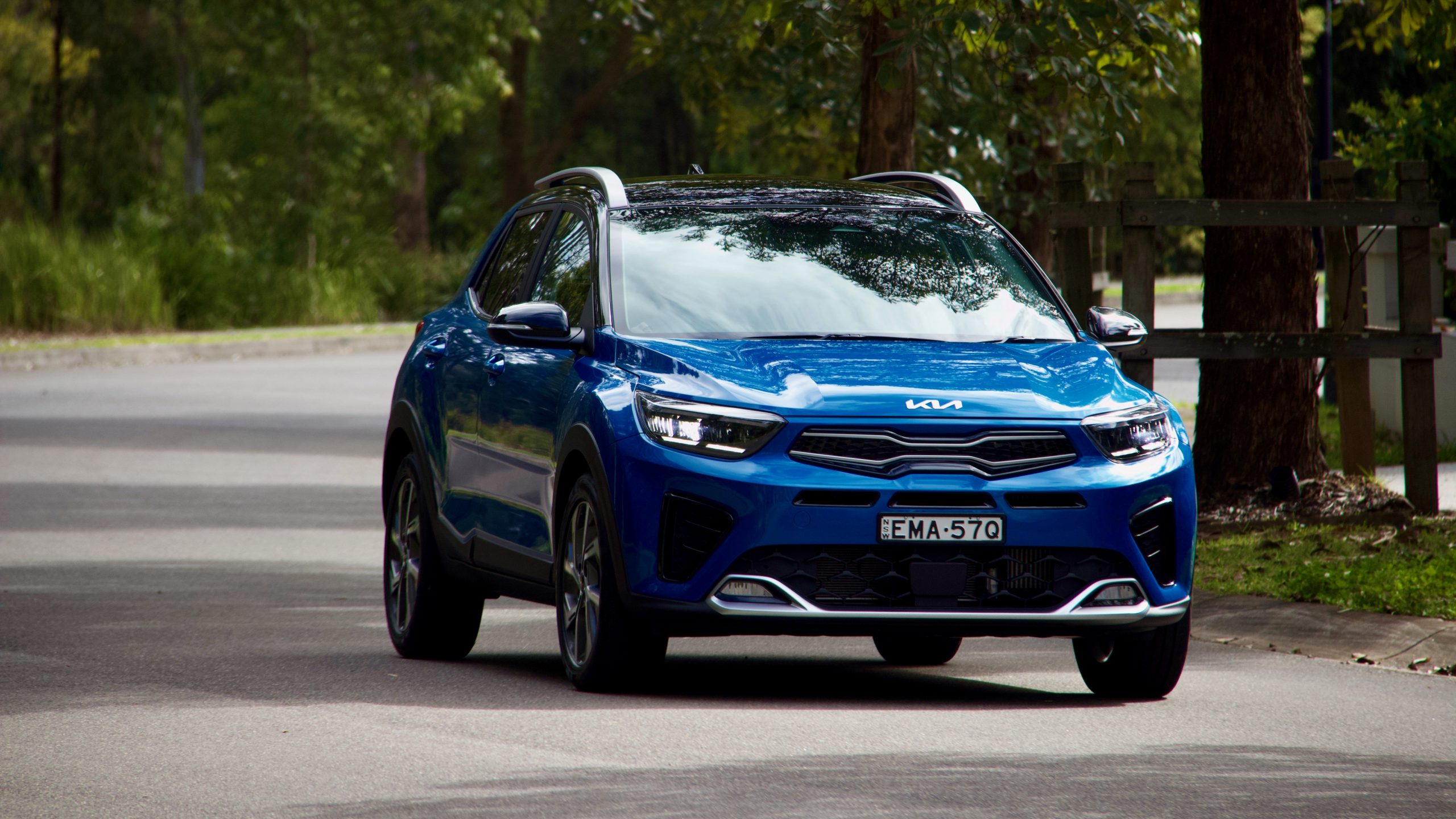
The Stonic is Kia’s smallest SUV in Australia and is a big seller within it’s segment. Is the Stonic the small SUV to buy? We tested out the top spec Stonic GT-Line, so read on to see our findings.
Price & Equipment: 7.5/10
Kia offers three equipment levels for the Stonic in Australia,: the base S, the mid level Sport and the top of the range GT-Line which we tested. The range kicks off with the manual S with a RRP of $21,990 ($24,690 drive away, depending on location), while the GT-Line at the opposite end of the Stonic lineup that we tested carries a RRP of $30,490 ($32,190 drive away, depending on location).
The option situation for the Stonic is unusual, as some colour premium choices come with the addition of a sunroof. The single-tone colour ‘Clear White’ and the two-tone colours ‘Clear White / Aurora Black Pearl roof’, ‘Mighty Yellow / Aurora Black Pearl roof’, ‘Signal Red / Aurora Black Pearl roof’ and the our test car’s ‘Sporty Blue / Aurora Black Pearl roof’ are all non-cost options without a sunroof. Single-tone ‘Perennial Grey’, ‘Aurora Black Pearl’, ‘Signal Red’, ‘Sporty Blue’ and ‘Mighty Yellow’ are all a $520 option and come with a sunroof.
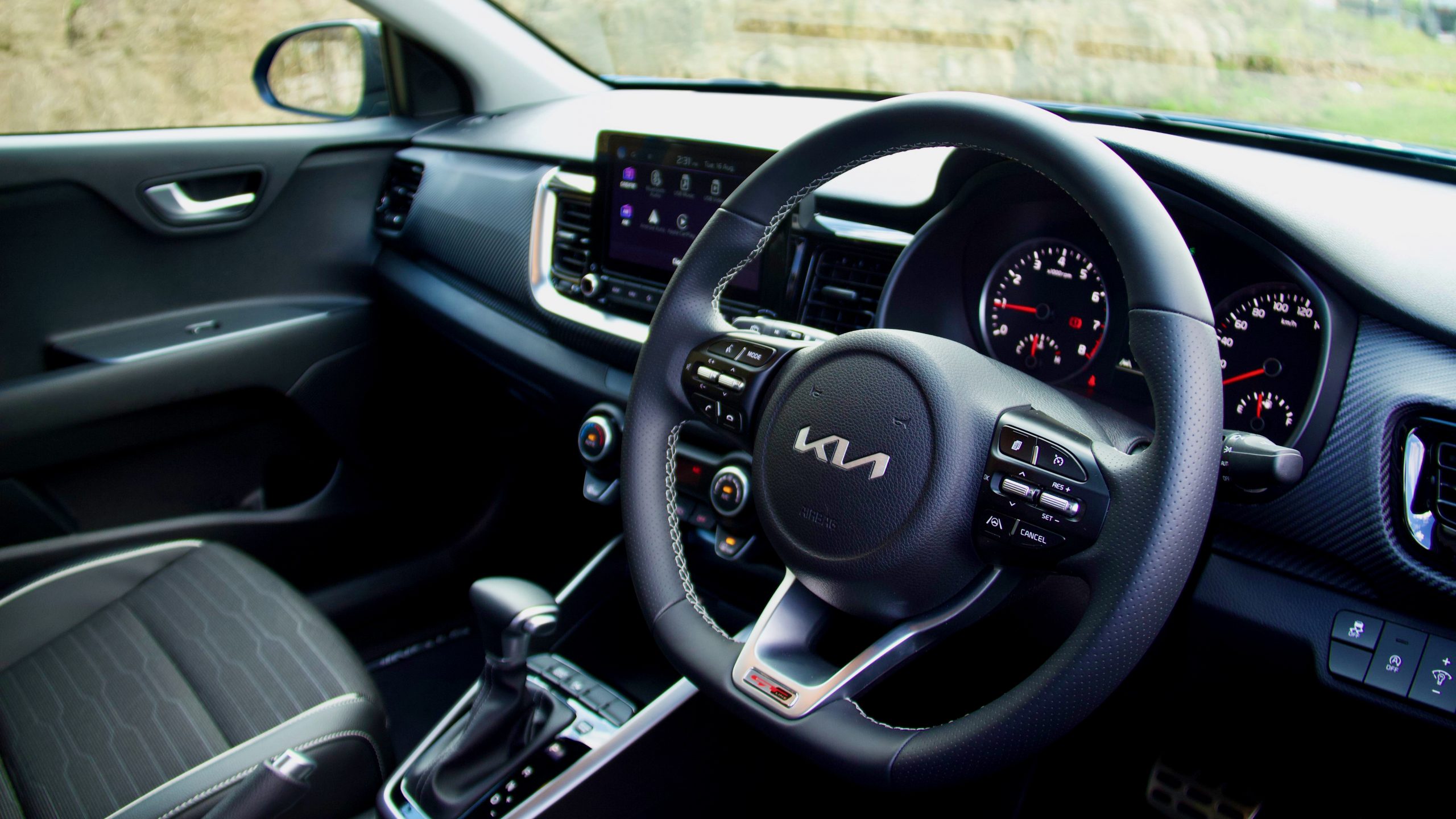
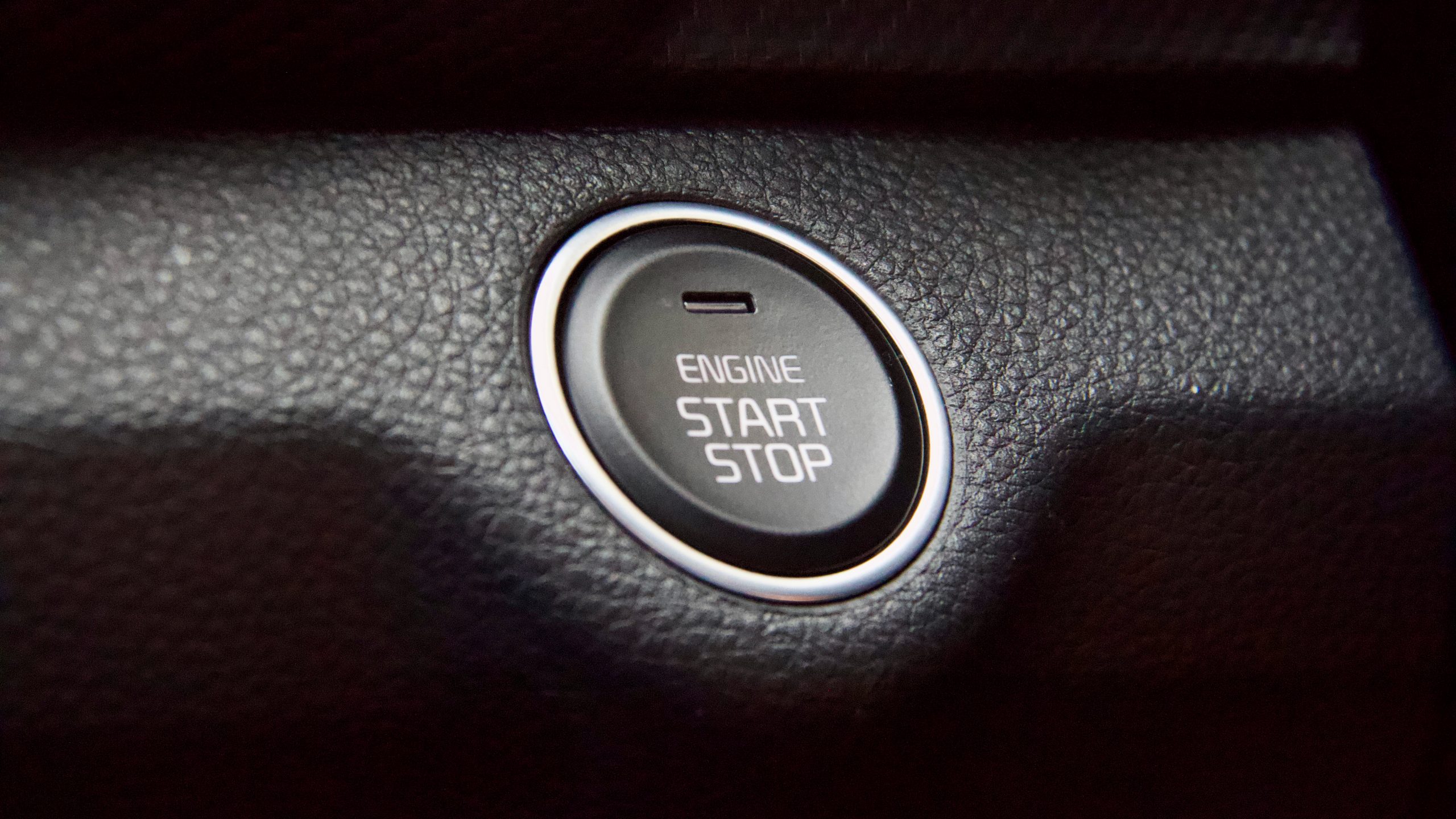
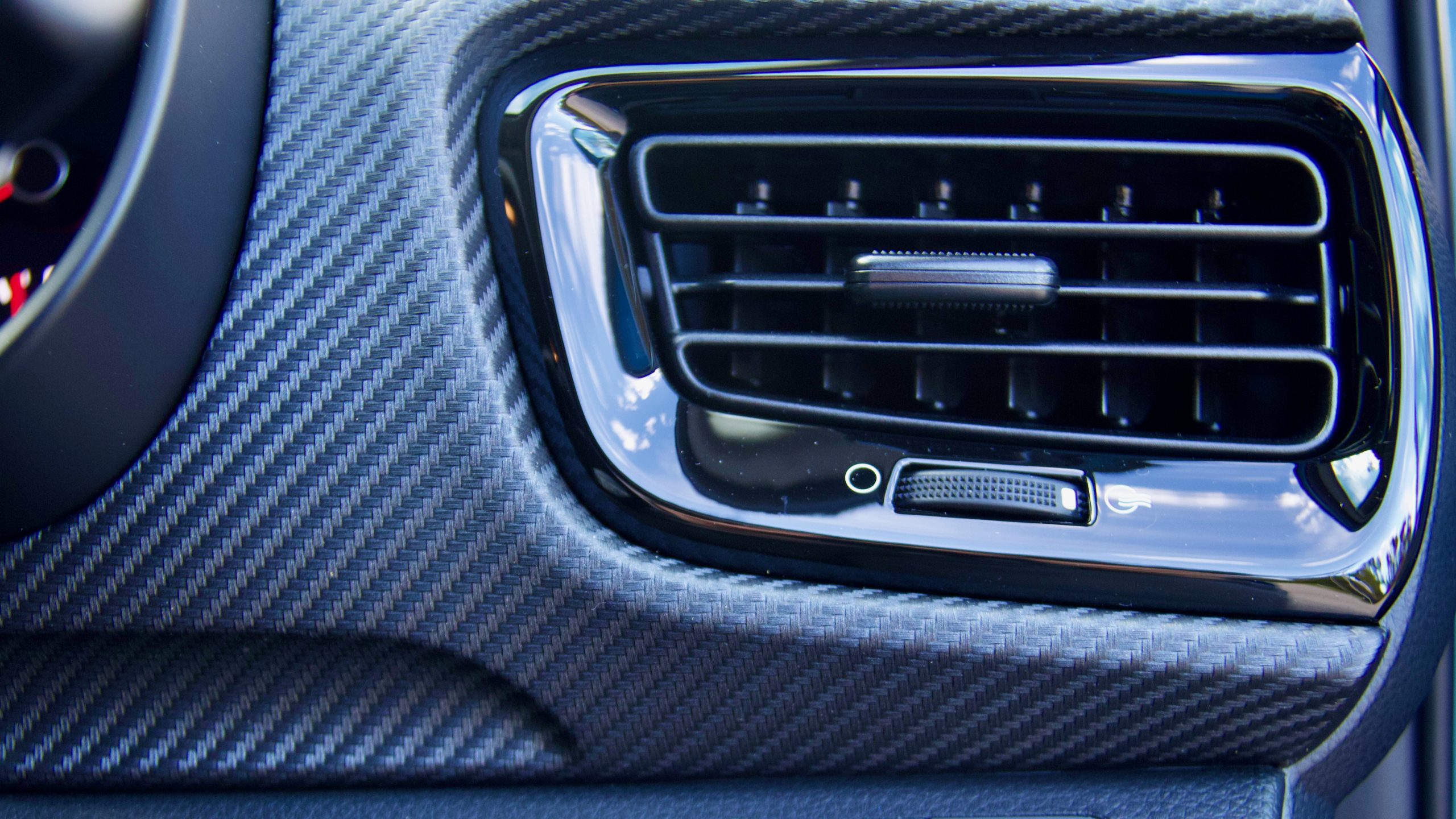
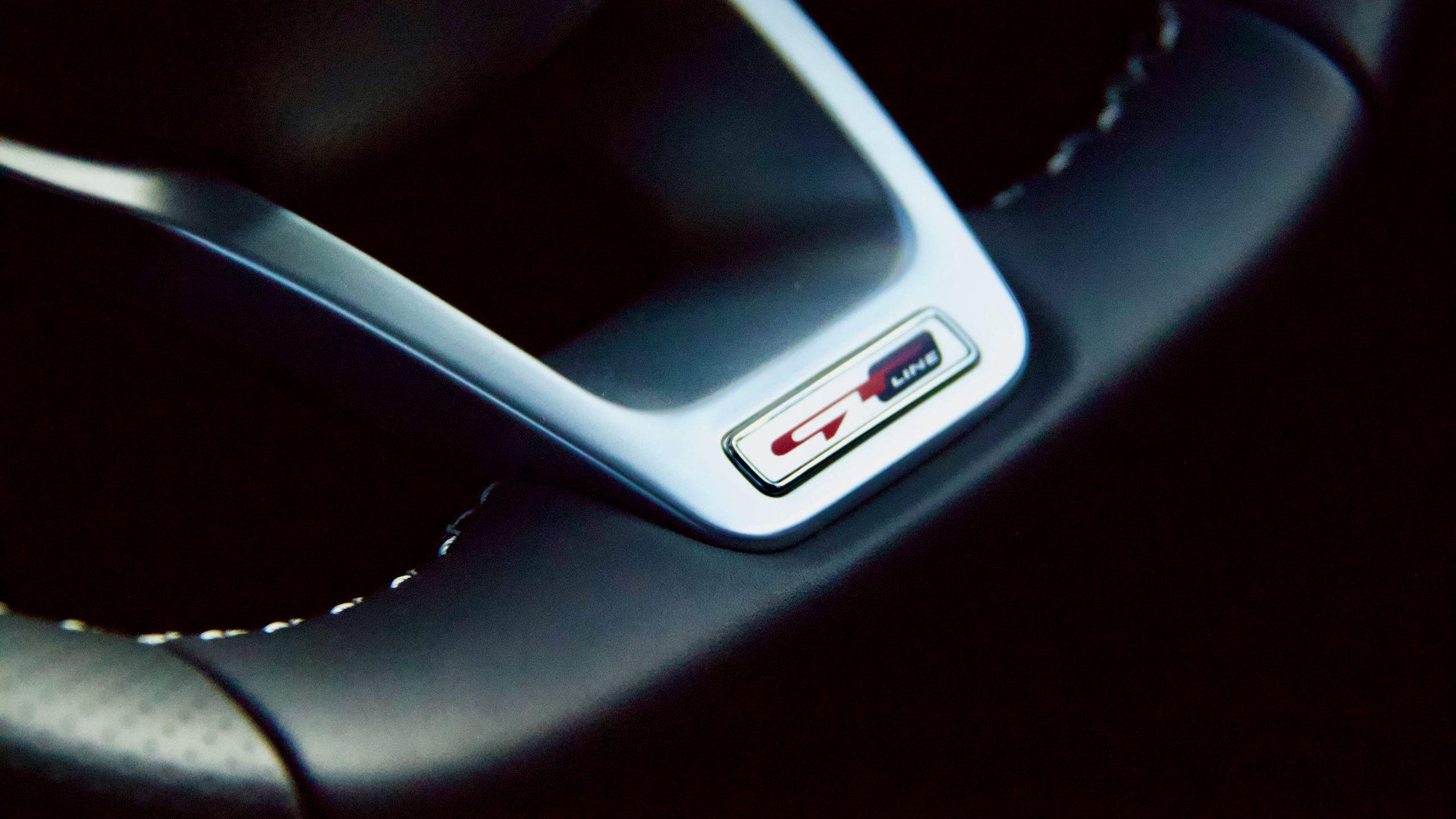
The 2022 Kia Stonic GT-Line is equipped with 17 inch alloys wheels, automatic LED headlights, front LED fog lights and LED daytime running lights, an auto-dimming rearview mirror, heated and electric-folding mirrors, rain-sensing front wipers, fabric seats with faux leather inserts, a six-way adjustable driver’s seat, keyless entry and push-button start, a leatherette steering wheel and gear shifter, a 4.2-inch driver’s display, single-zone climate control, an 8-inch touchscreen infotainment system with wired Apple CarPlay and Android Auto, digital radio and satellite navigation, a six speaker sound system and two USB charging points.
The Stonic received a five-star ANCAP rating awarded through the inclusion of six airbags (dual front, dual front side and front/rear curtain), AEB (auto emergency braking), lane keep and follow assist, driver attention alert and lead vehicle departure, reverse parking sensors and a rearview camera with a dynamic parking guideline display.
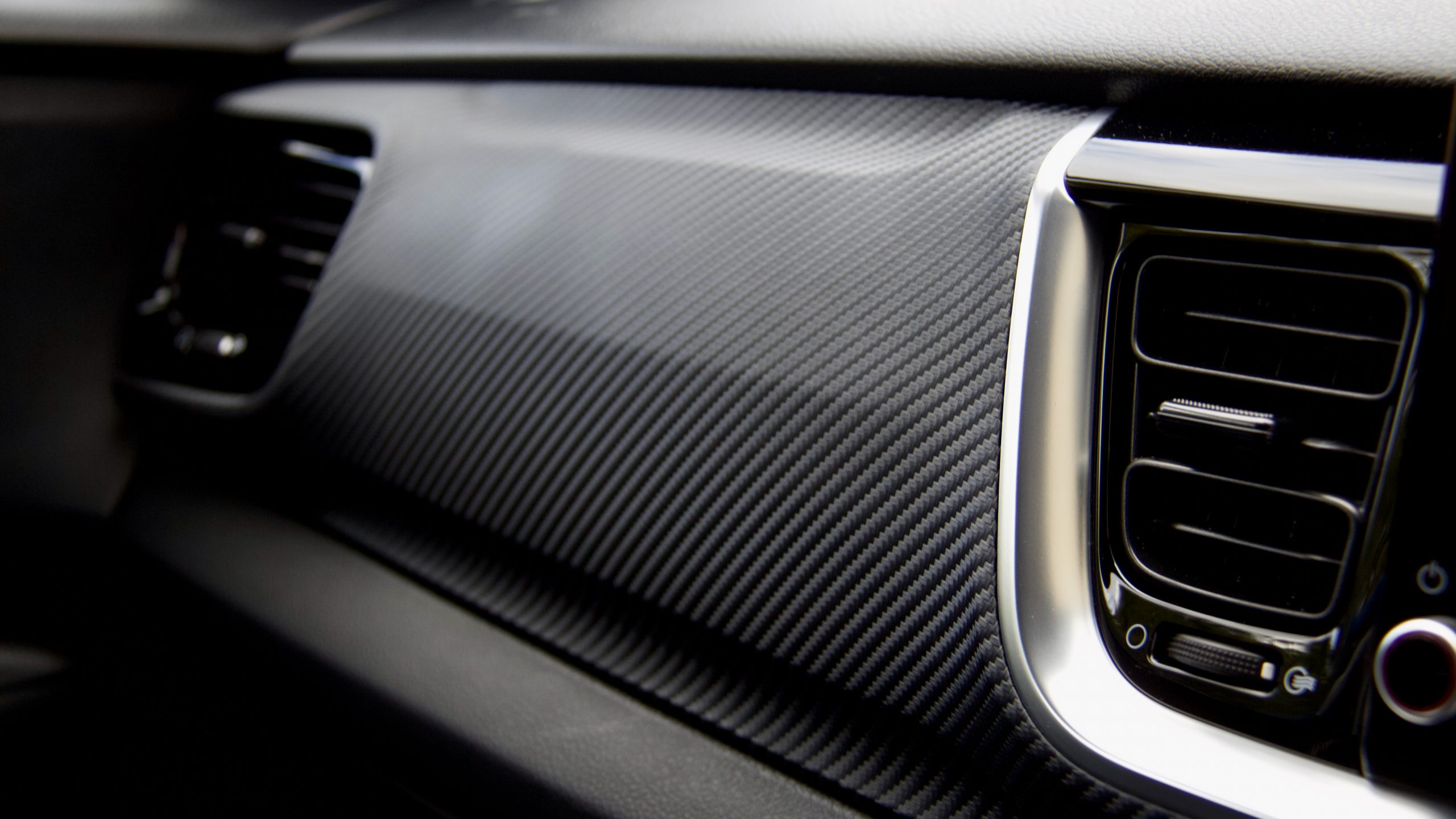
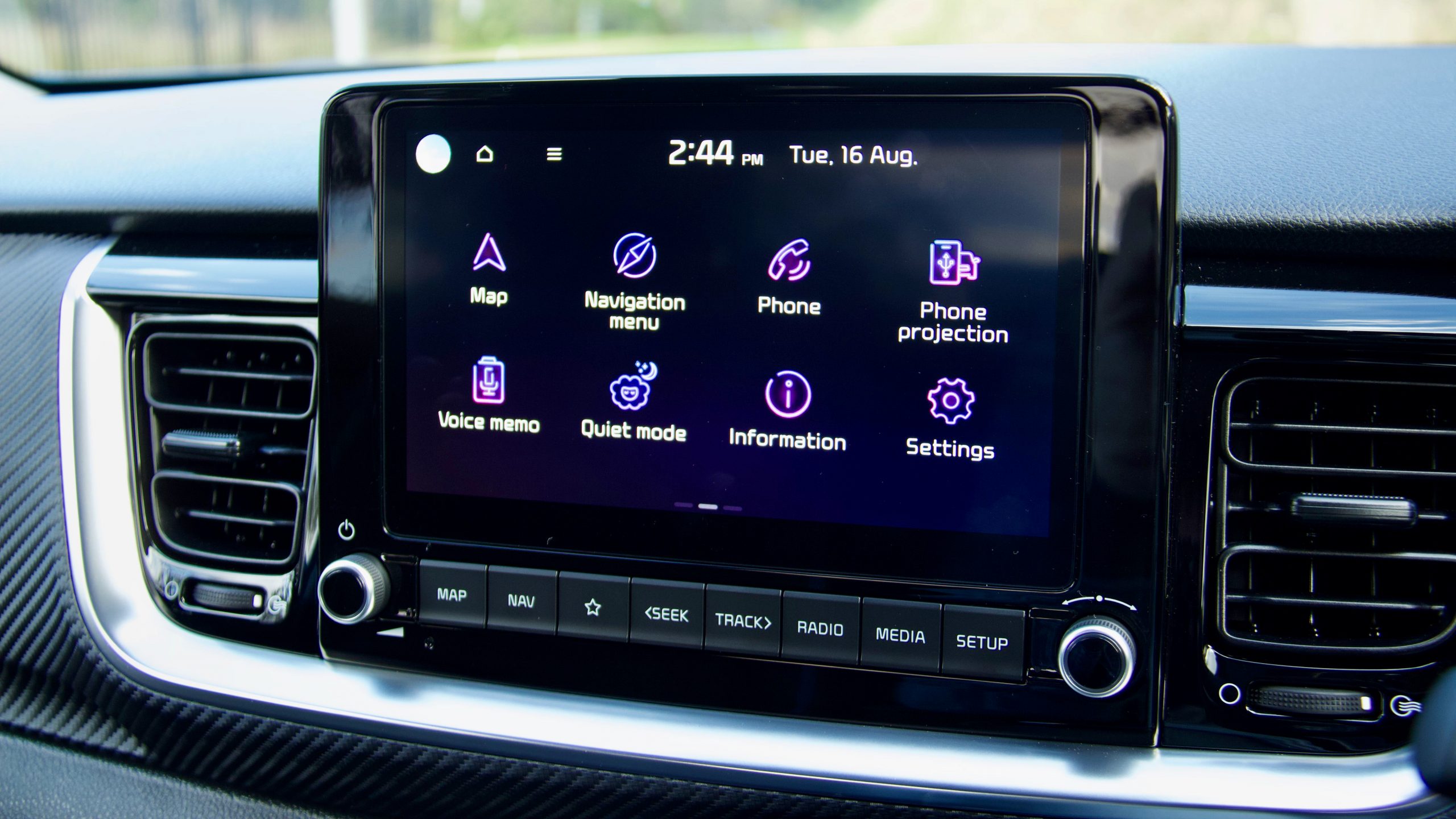
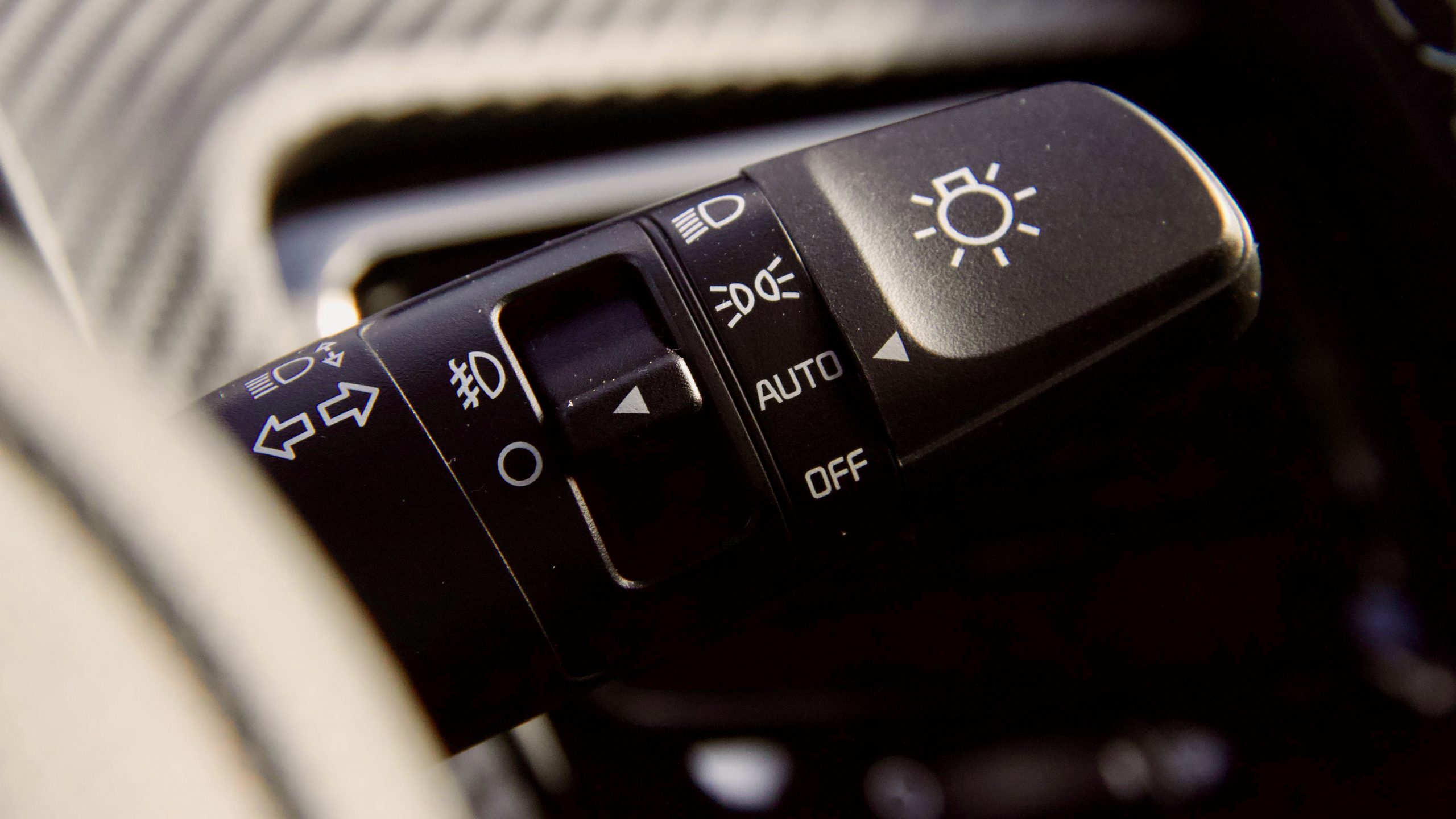
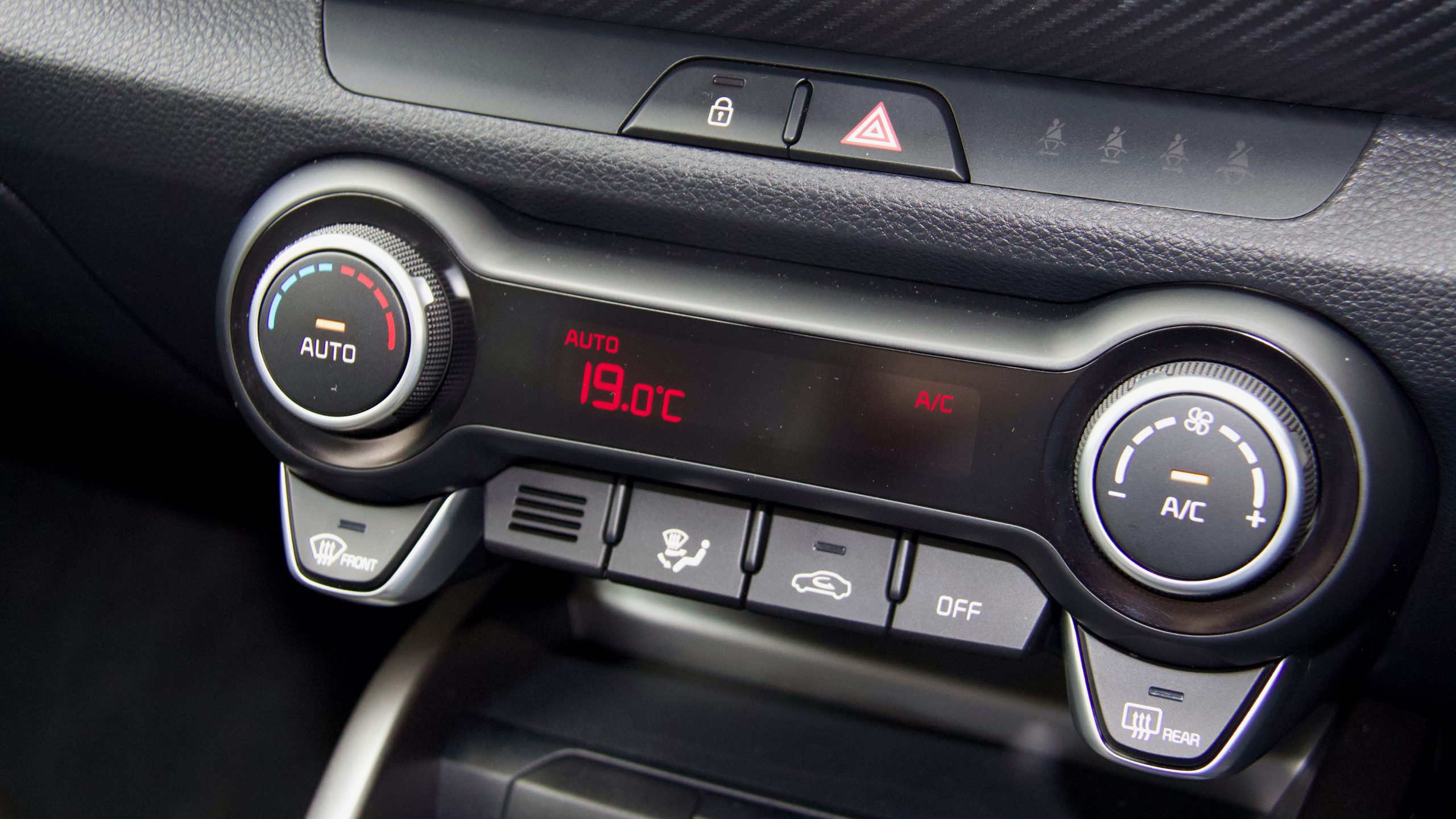
There are numerous other small SUVs on the market – we selected the Mazda CX-3 Maxx Sport 2WD with a RRP of $27,390 ($31,323 drive away, depending on location) and the Toyota Yaris Cross GXL 2WD Petrol priced at a RRP $29,990 ($33,658 drive away, depending on location). Compared with the Stonic, the CX-3 has blind-spot monitoring and rear cross traffic alert, but the Stonic has several features missing on the CX-3, including: heated side mirrors, keyless entry, a driver’s information display, lane keep and follow assist, driver attention warning, DRLs, front fog lights and LED headlights (the CX-3 has halogen headlights).
Compared with the Yaris Cross, the Stonic features larger 17-inch wheels (16-inch on the Yaris), a one-inch bigger infotainment screen, front fog lights, a rear USB charging point, an auto-dimming rear-view mirror, leather inserts on the front seats and driver attention alert. The Yaris Cross fires back with a rear fog light, auto-folding side mirrors, connected services (SOS calling, automatic collision notification and stolen vehicle tracking), a 360-degree camera, front and rear cross traffic alert, speed sign recognition, radar cruise control, blind spot monitoring, two extra airbags, front parking sensors and parking support brake.
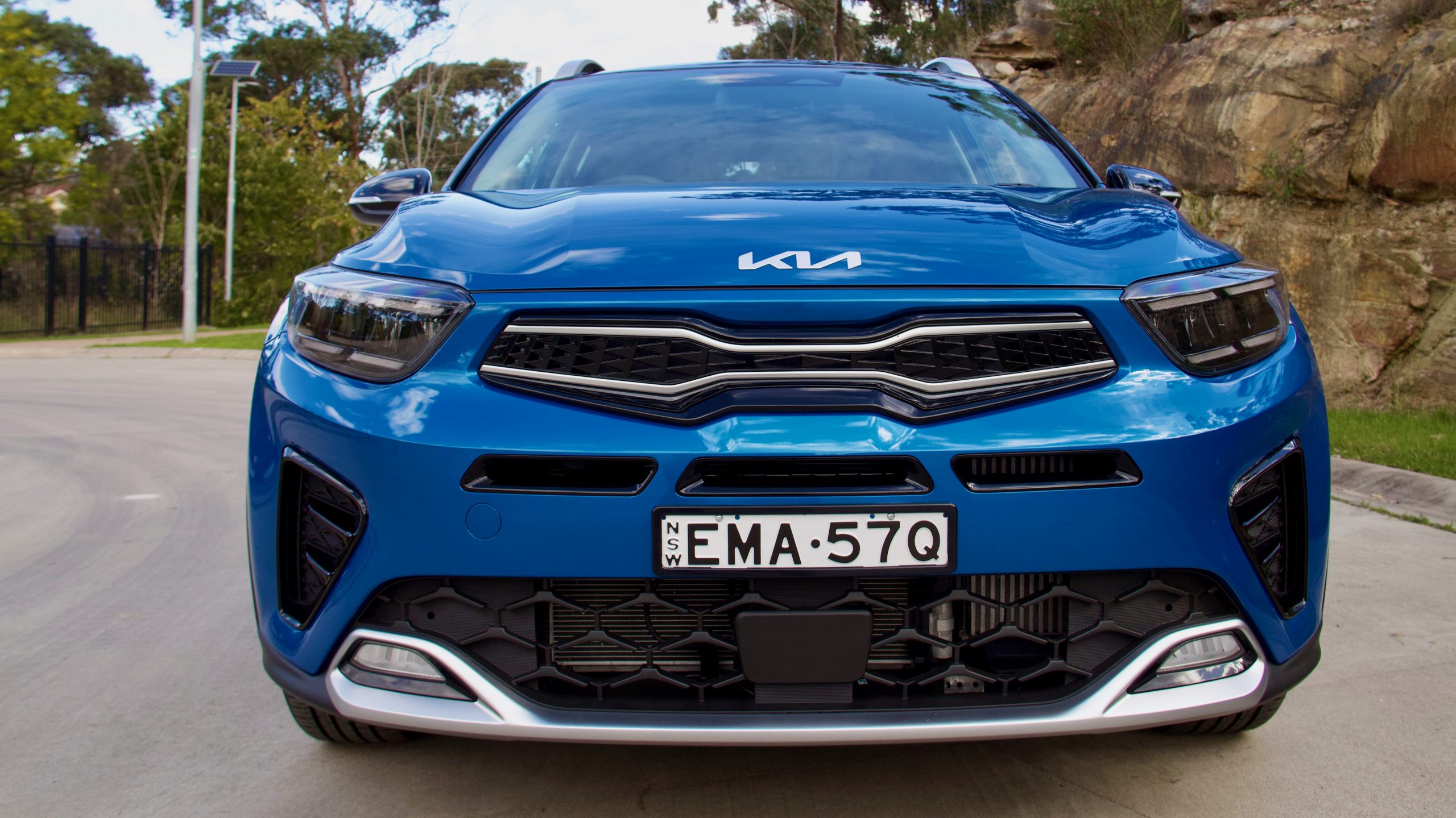
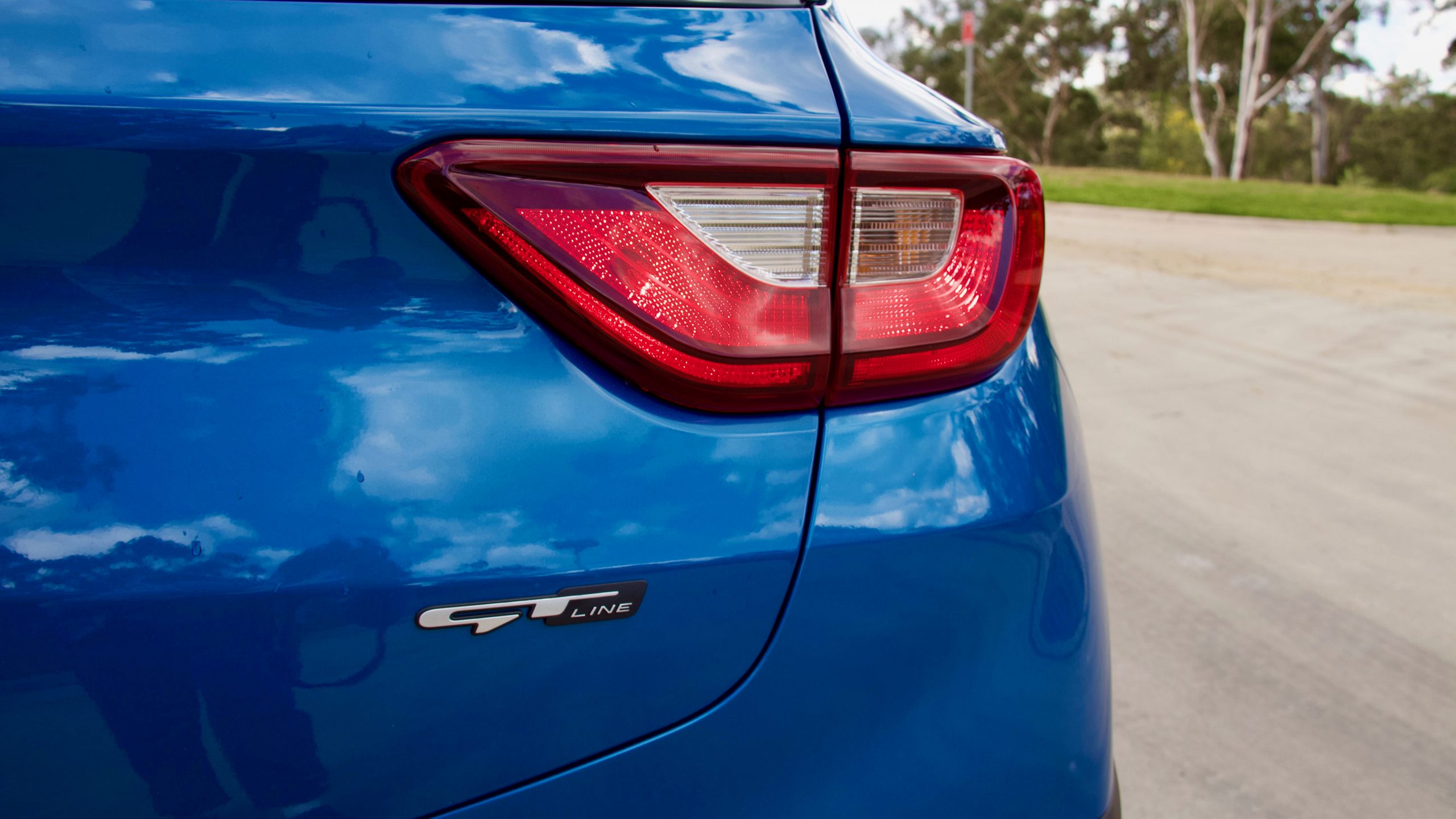
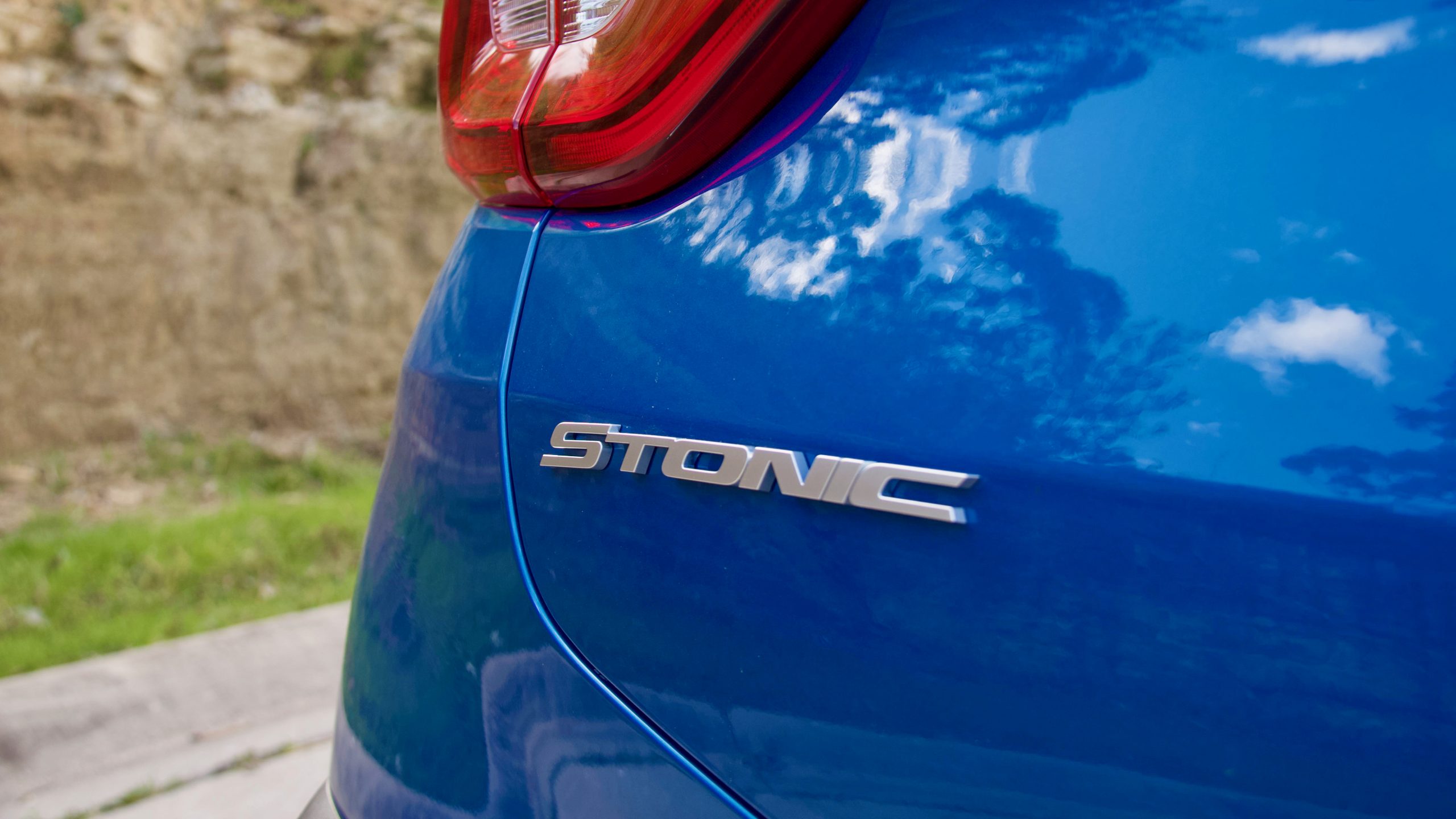
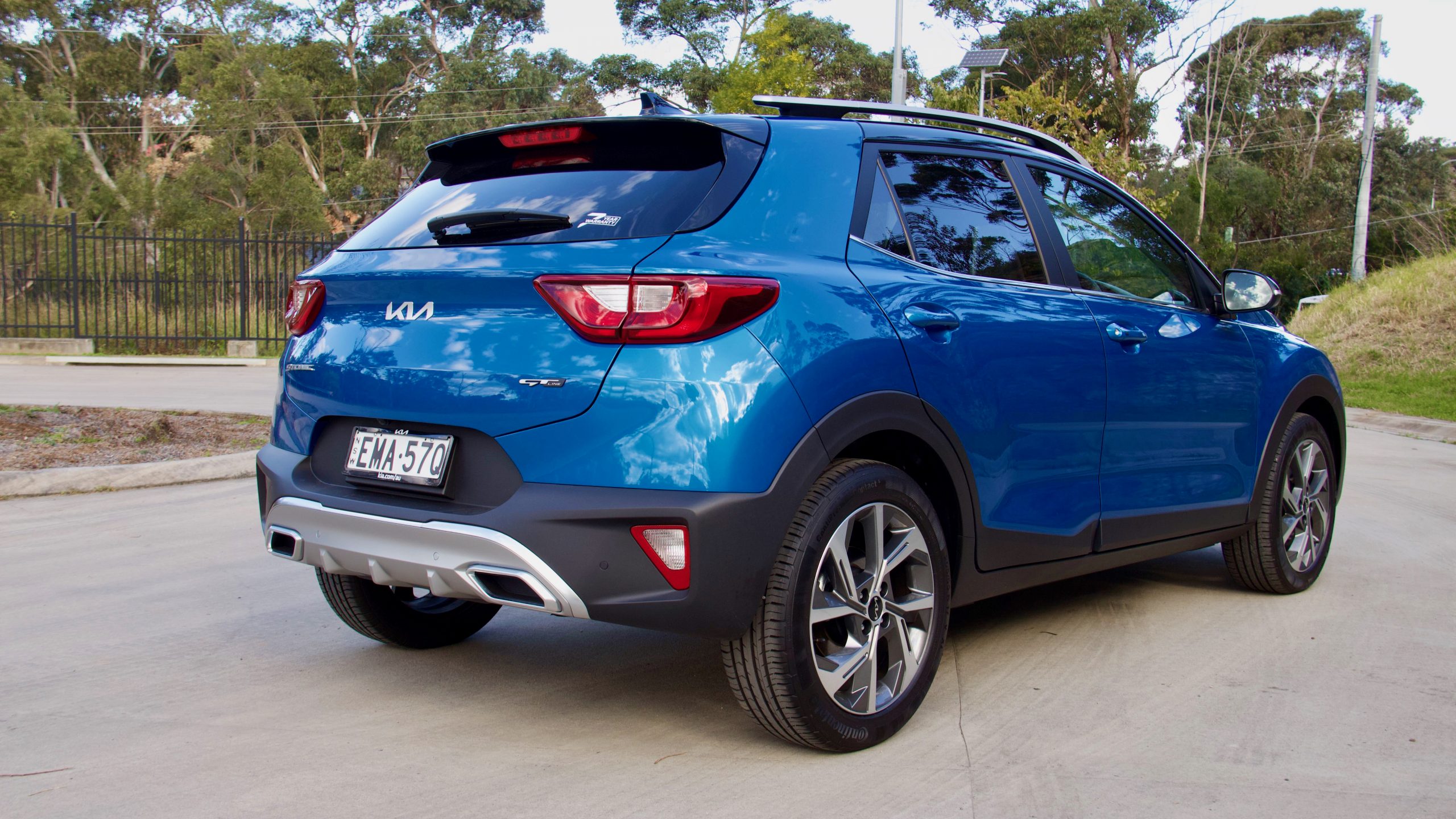
We think that the 2022 Kia Stonic GT-Line is fairly well featured for the price point, but it should include a panoramic view monitor, a digital instrument cluster, speed sign recognition and auto-folding side mirrors. We think the biggest problem with the Stonic, spec wise, is a lack safety equipment – front parking sensors, radar cruise control, front and rear cross-traffic alert, blind-spot monitoring and speed sign recognition should all be part of the equipment list.
Performance & Economy: 7/10
Unlike the rest of the Stonic range, which makes do with an underwhelming 1.4-litre four-cylinder engine, the GT-Line has 1.0 litre three-cylinder turbo petrol engine, which develops 74kW of power and 172Nm of torque. While the power output might sound diminutive, the torque which can be accessed low in the RPM range, which helps the Stonic feel a lot faster than it is. Strangely, the Stonic defaults to an ‘eco’ drive mode, which dulls the experience in almost every way – changing to the ‘normal’ mode improves experience greatly, though the driver must change the drive mode every time the car is started. A 0-100km time of 12 seconds again might sound slow, the Stonic still manages to feel fast enough – the engine is willing and rewards the driver when pushed a bit.
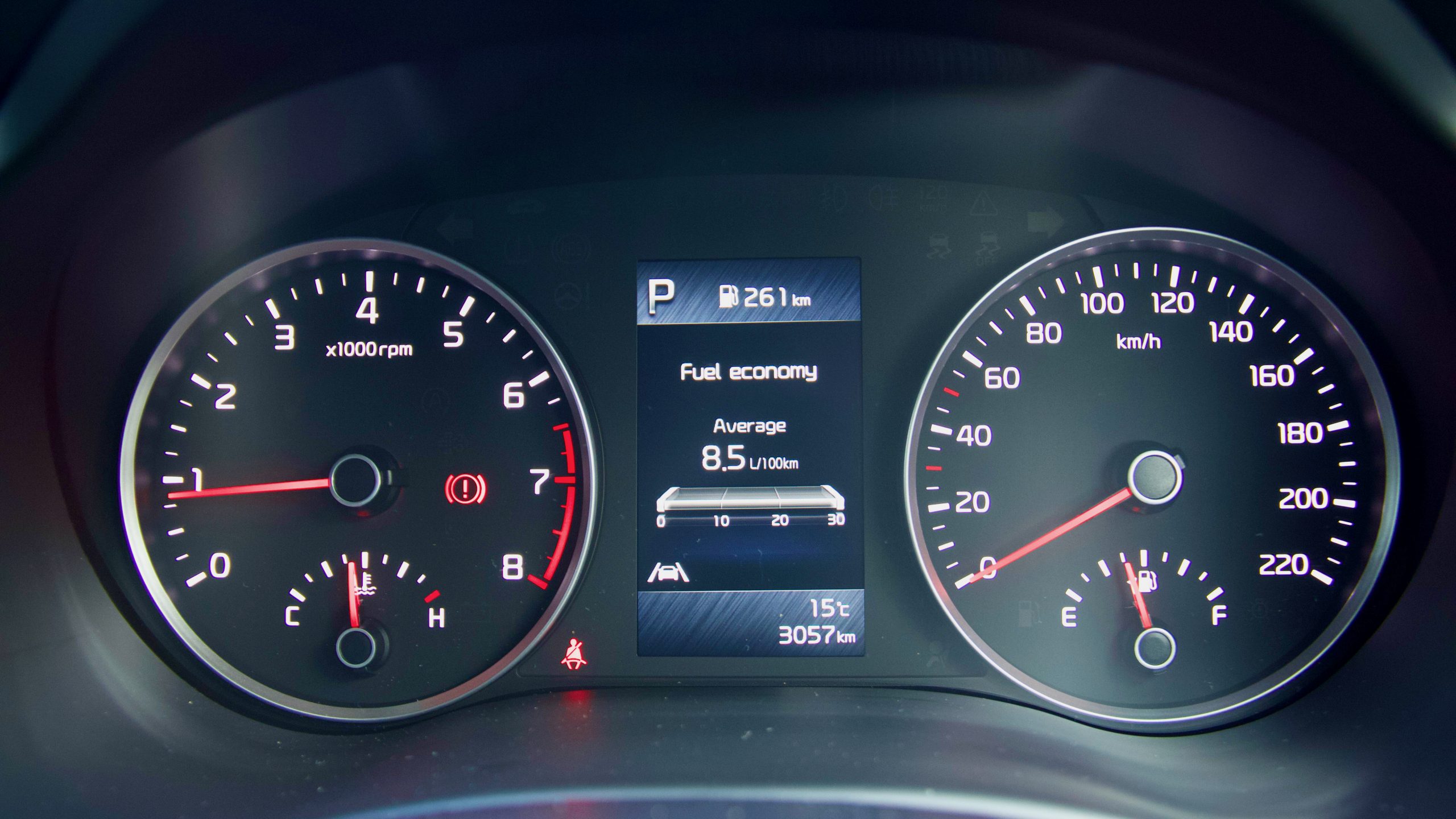
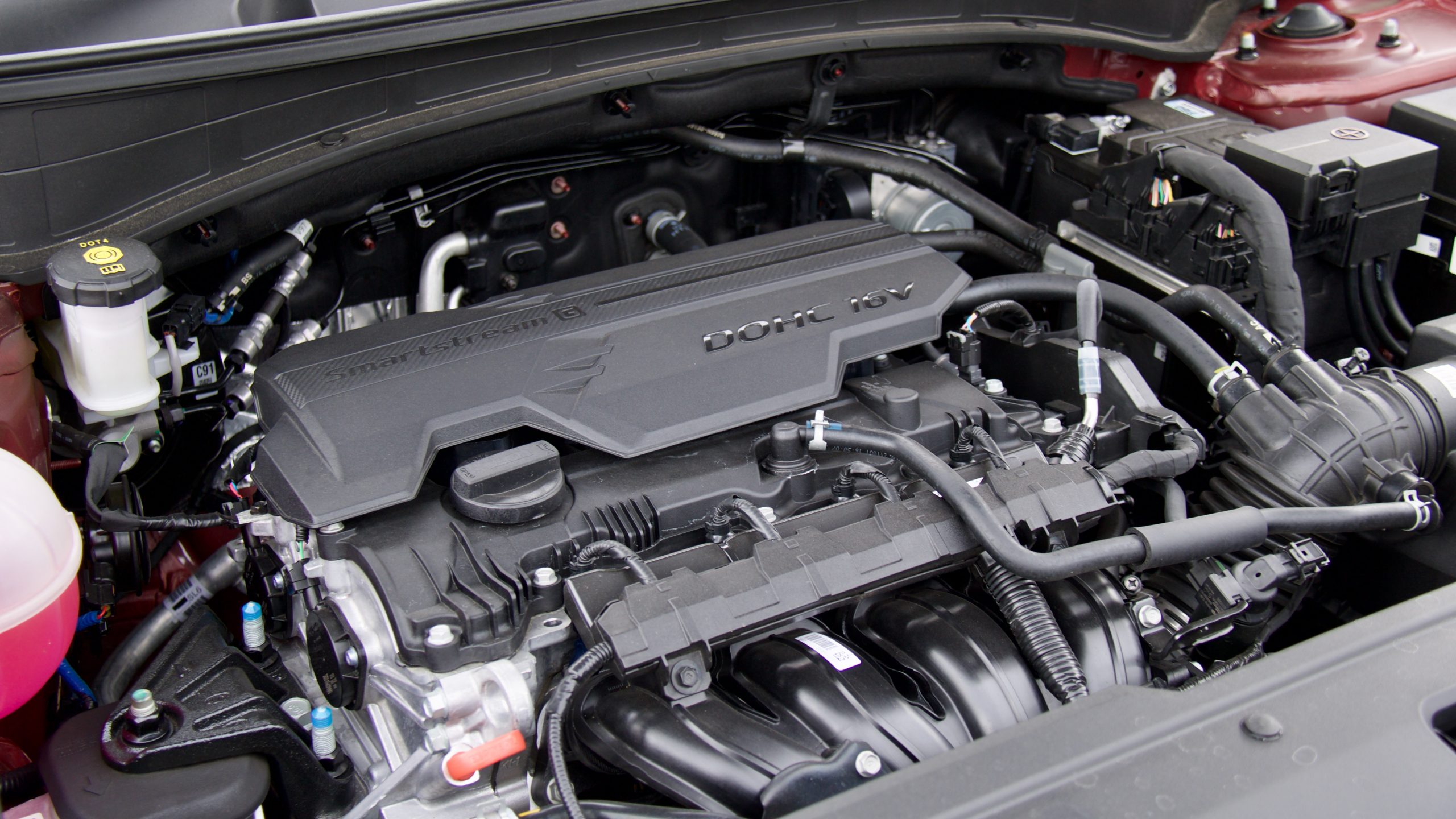
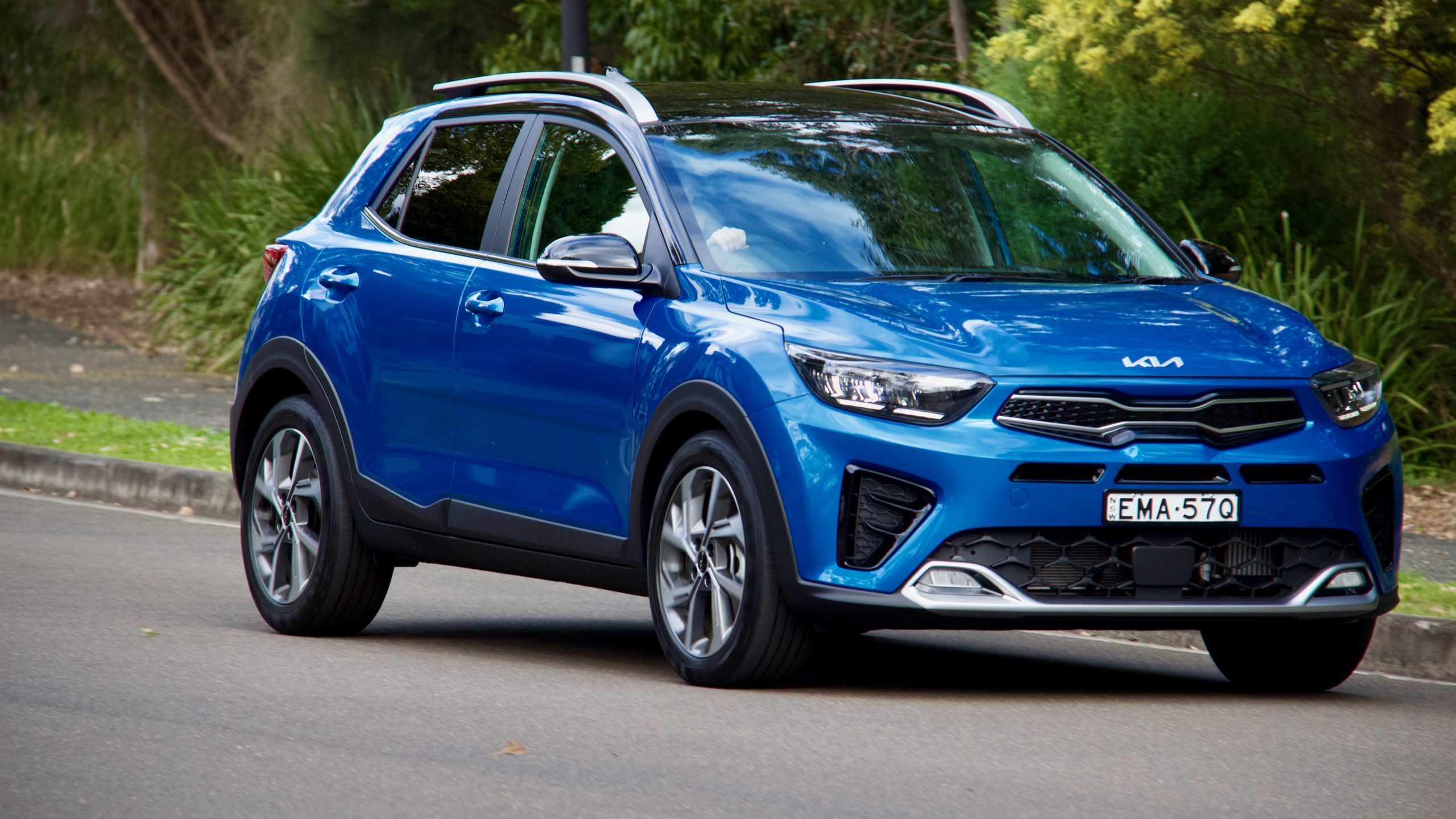
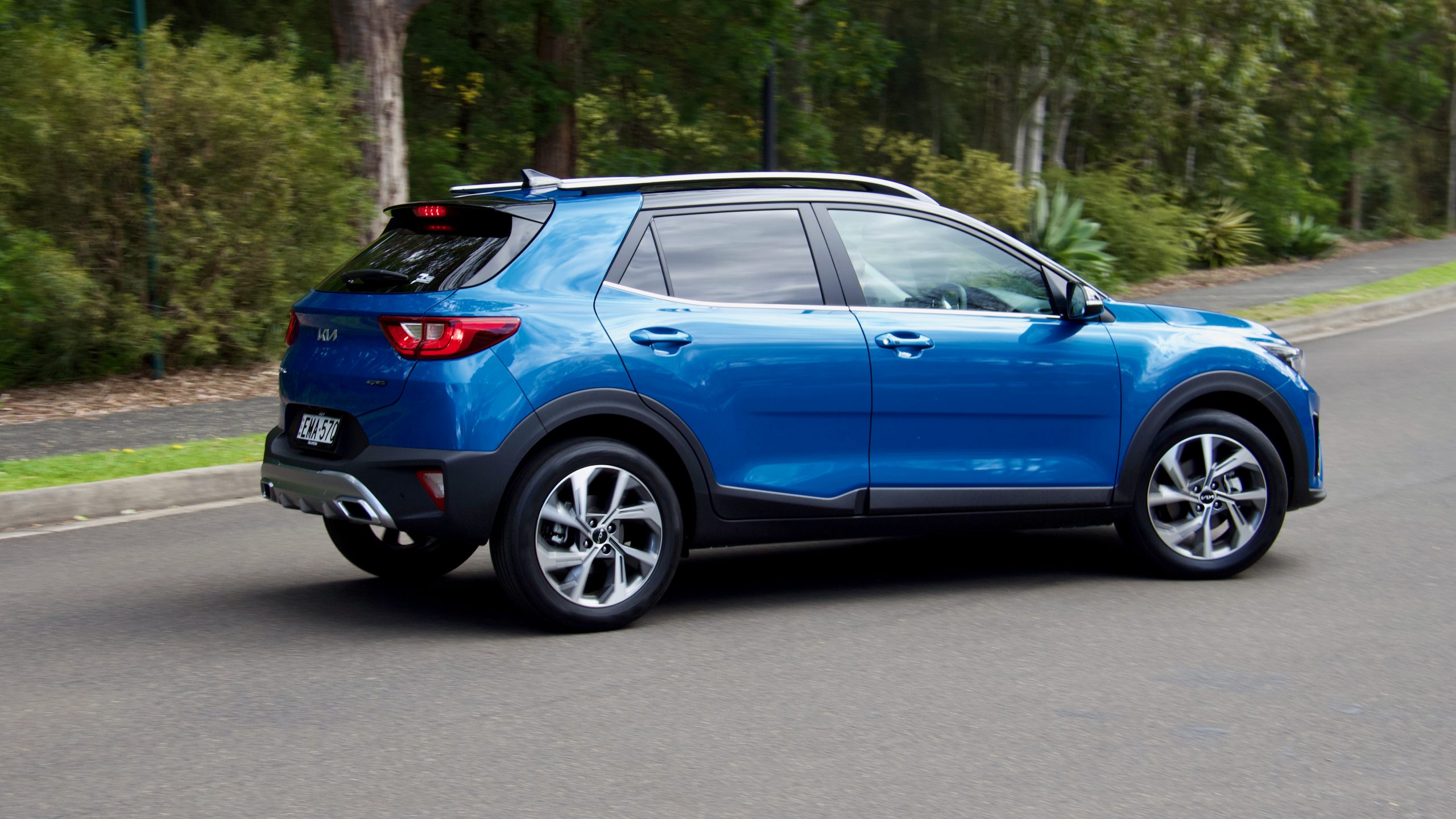
The three cylinder power-plant is packed with character, with a satisfying engine note which adds a sporty dimension to the driving experience. Apart from when being pushed hard, it is generally quite refined – impressive for a three cylinder unit. The Stonic really excels around town where it gets up to speed quickly, and feels responsive. On the highway, the Stonic copes, but overtaking must be well planned in advance.
The 2022 Kia Stonic GT-Line delivers power to the front two wheels through a seven-speed DCT transmission, which is unfortunately a weak link in the Stonic’s drivetrain. At low speeds, especially while manoeuvring or creeping in traffic where the transmission hesitates becoming jerky and unrefined, exhibiting the type of slipping feeling DCTs are known for. Additionally, we found the transmission became confused more often than it should have, holding gears too long or downshifting unnecessarily – more-so at low speeds, but occasionally at higher speeds. Unfortunately the Stonic’s DCT manages to combine the worst of DCTs and torque converter transmissions. That being said, getting above speeds of 50km/h, the DCT usually shifts quickly and precisely.
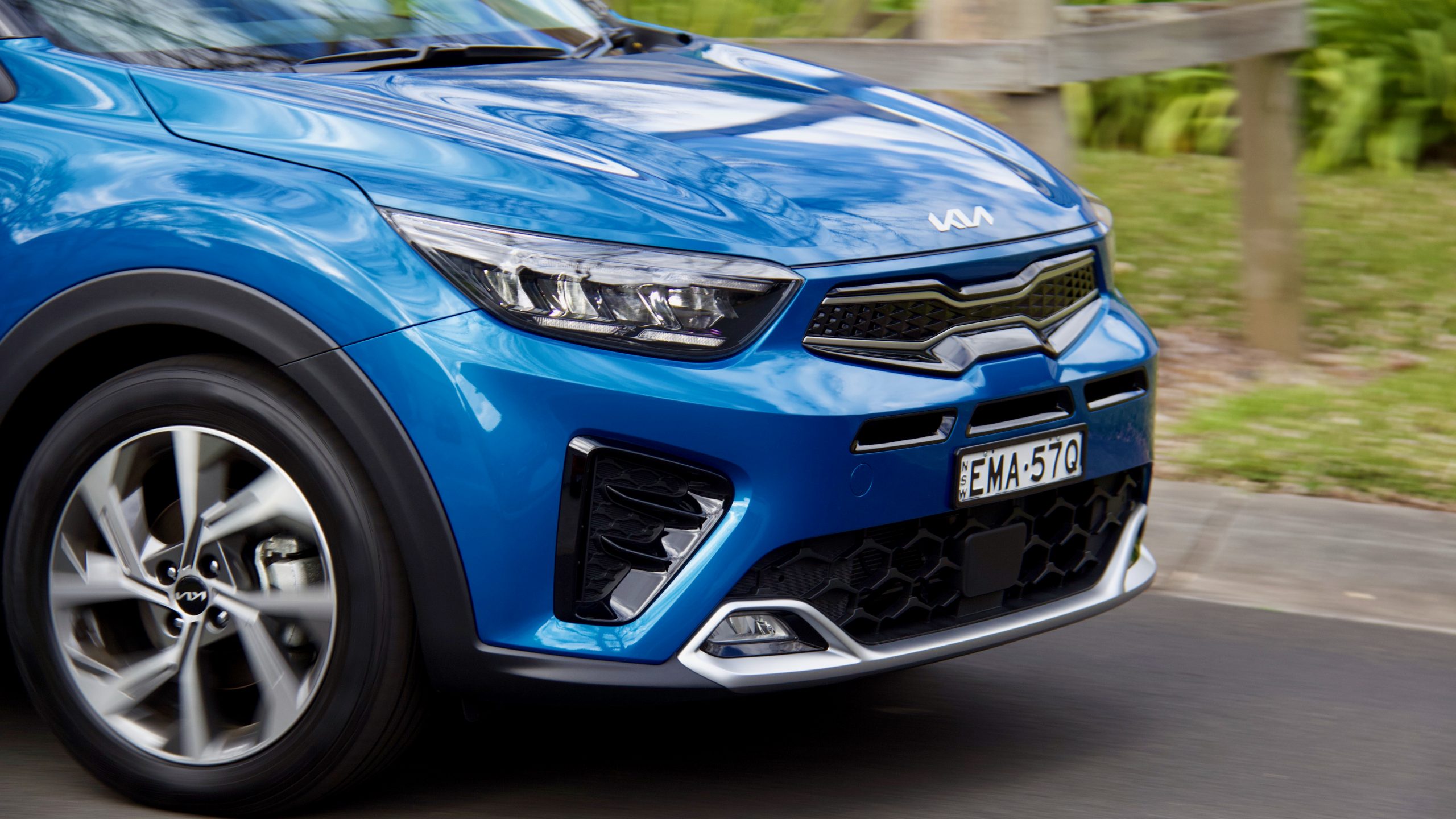
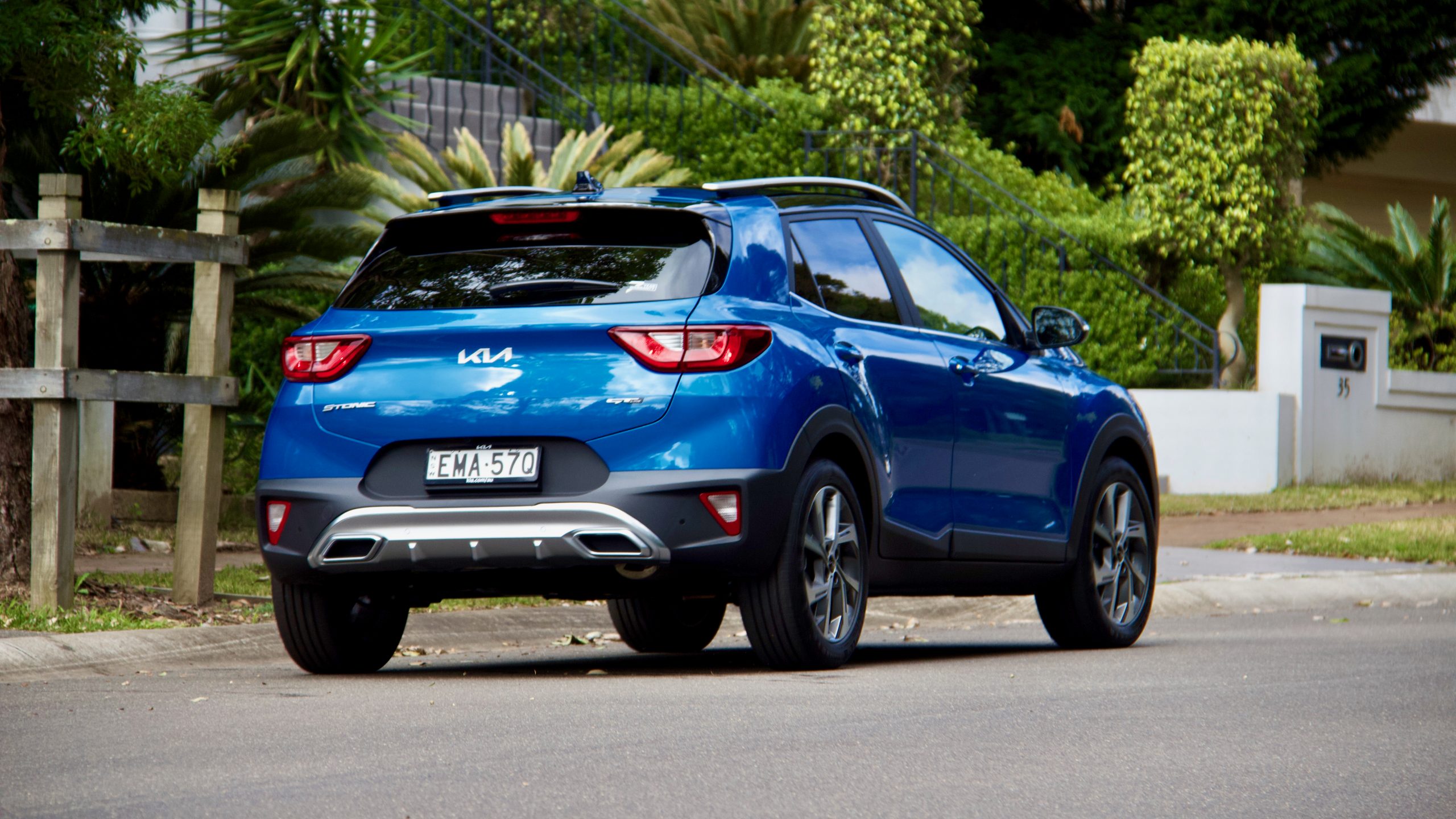
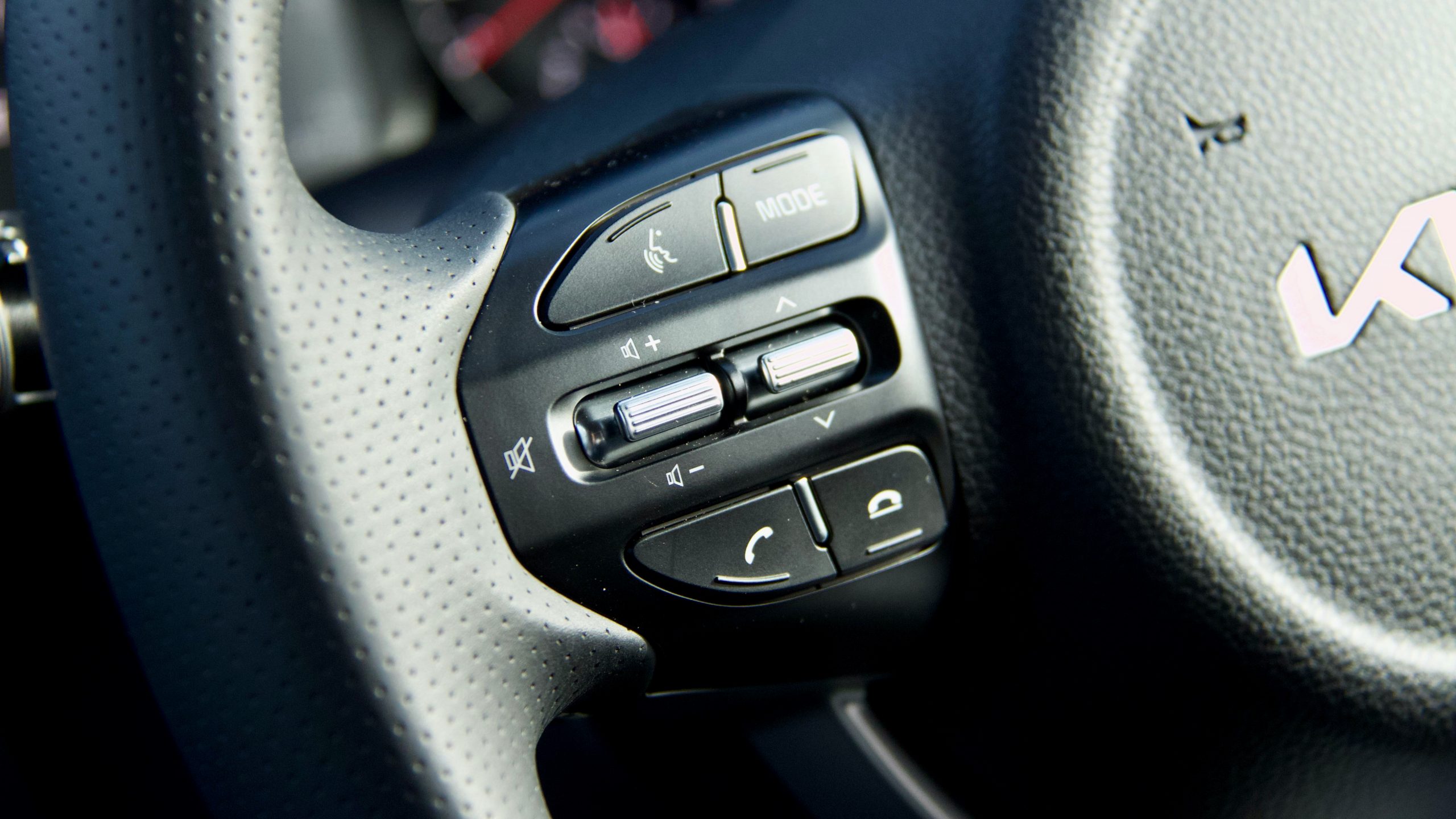
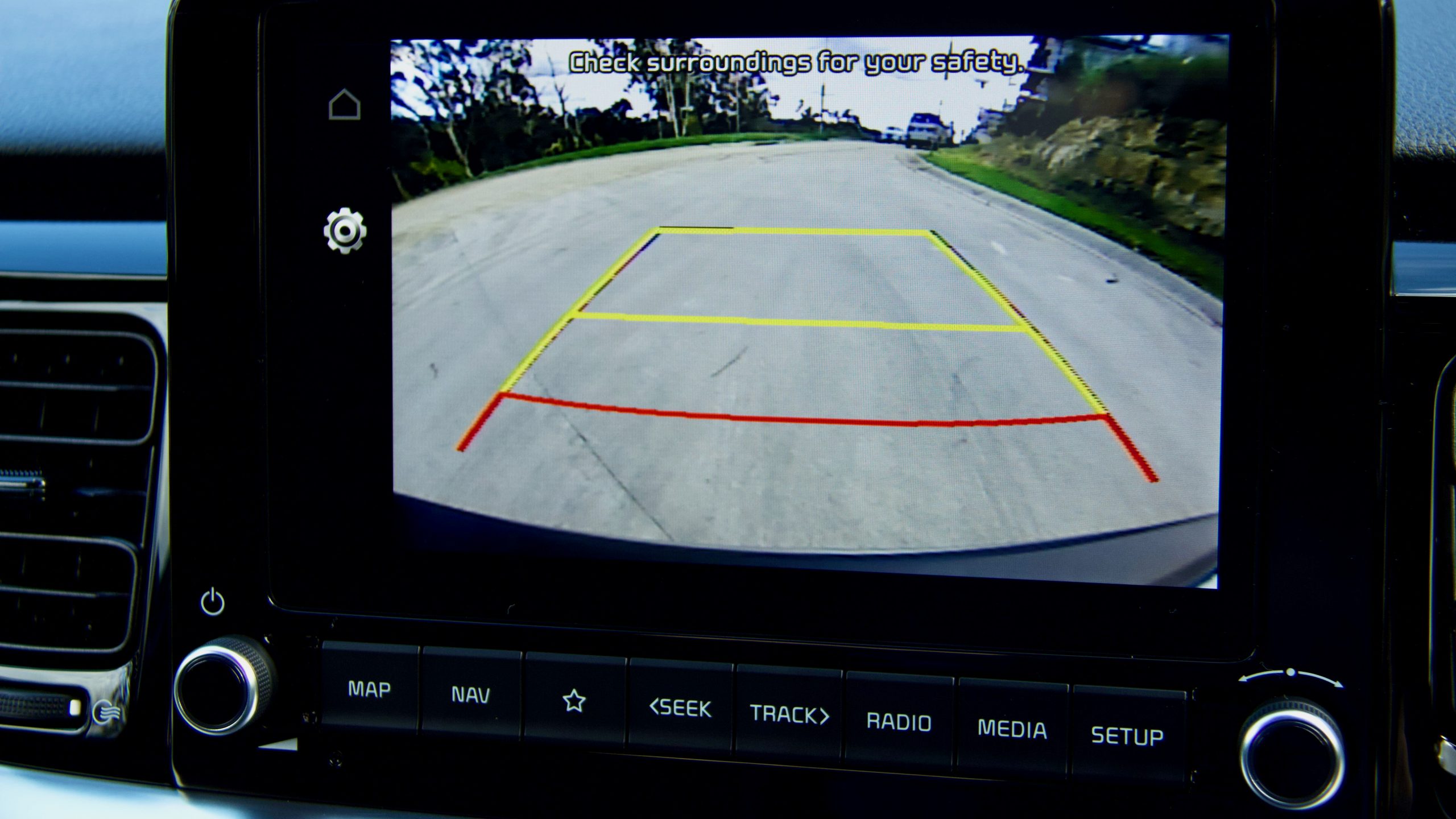
Kia claims the Stonic GT-Line will consume 5.4L/100km of fuel with emissions of 125g/100km on a combined cycle. However, over our week with the Stonic GT-Line, we returned a fuel consumption figure of 8.5L/100km from a mixture of suburban and highway driving, which is a fair way off Kia’s claimed figure. With the fuel consumption we saw on test and its 45 litre fuel tank, drivers should be able to drive 529kms on a single tank. The Stonic GT-Line can be filled with regular 91 octane unleaded fuel.
Ride & Handling: 7.5/10
While the 2022 Kia Stonic GT-Line might be positioned as the ‘sporty’ model in the Stonic range, the ride and handling balance is weighed more towards comfort and sure-footedness. The steering is fairly well weighted, though definitely on the lighter side, which helps make the Stonic feel nimble around town – which is where it’s most at home. Steering feedback could be better, but it’s fairly on par with competitors.
Handling-wise, the Stonic is predictable and safe, which is what most buyers will be looking for. Drivers who want a bit more can push the Stonic a little more and be rewarded – corners can be fun, however it doesn’t take much for body roll and understeer to become evident. That being said, the same can be said for most of the Stonic’s main competitors – small SUVs for the most part are built for puttering around the city, not as performance cars.
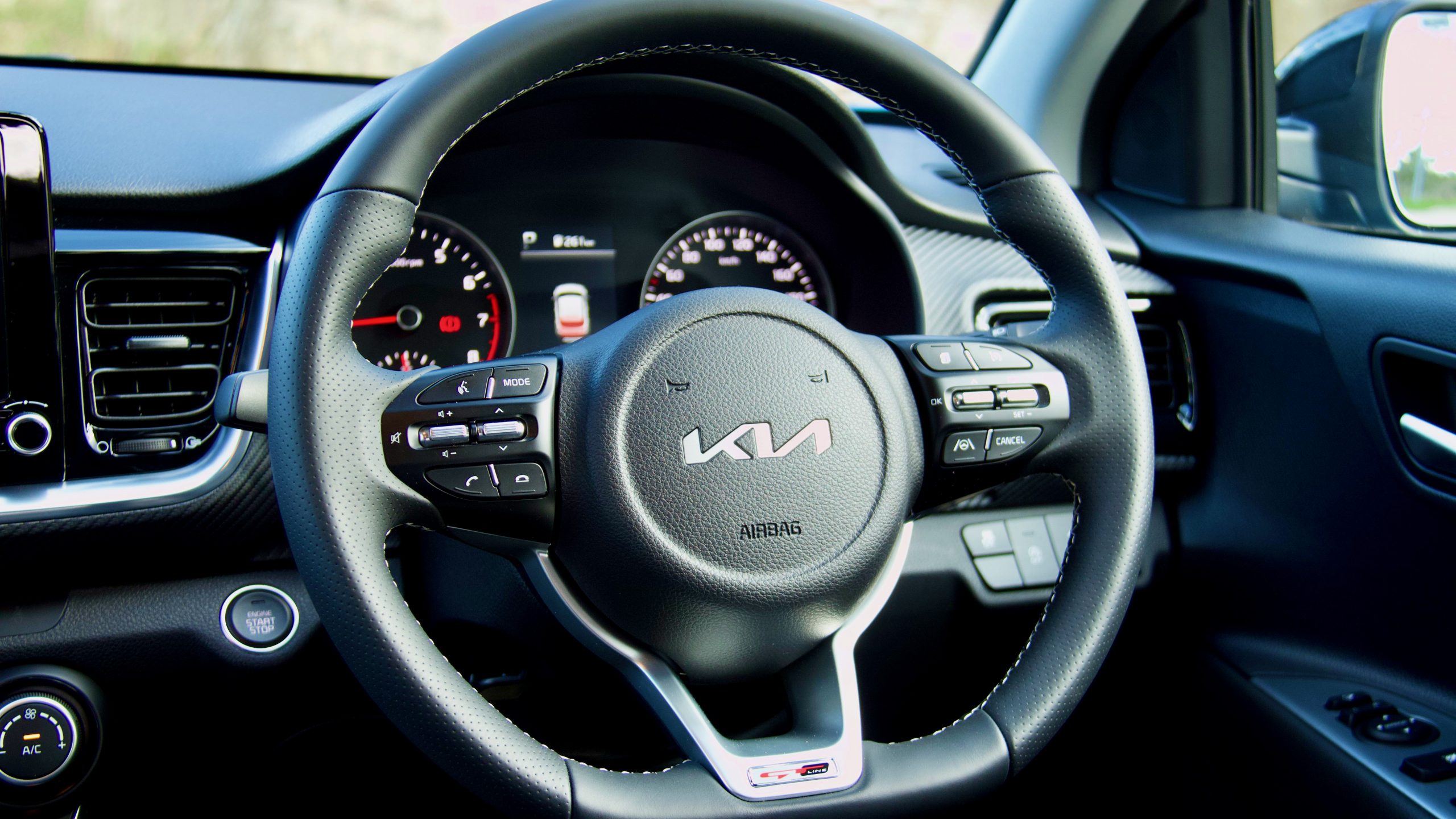
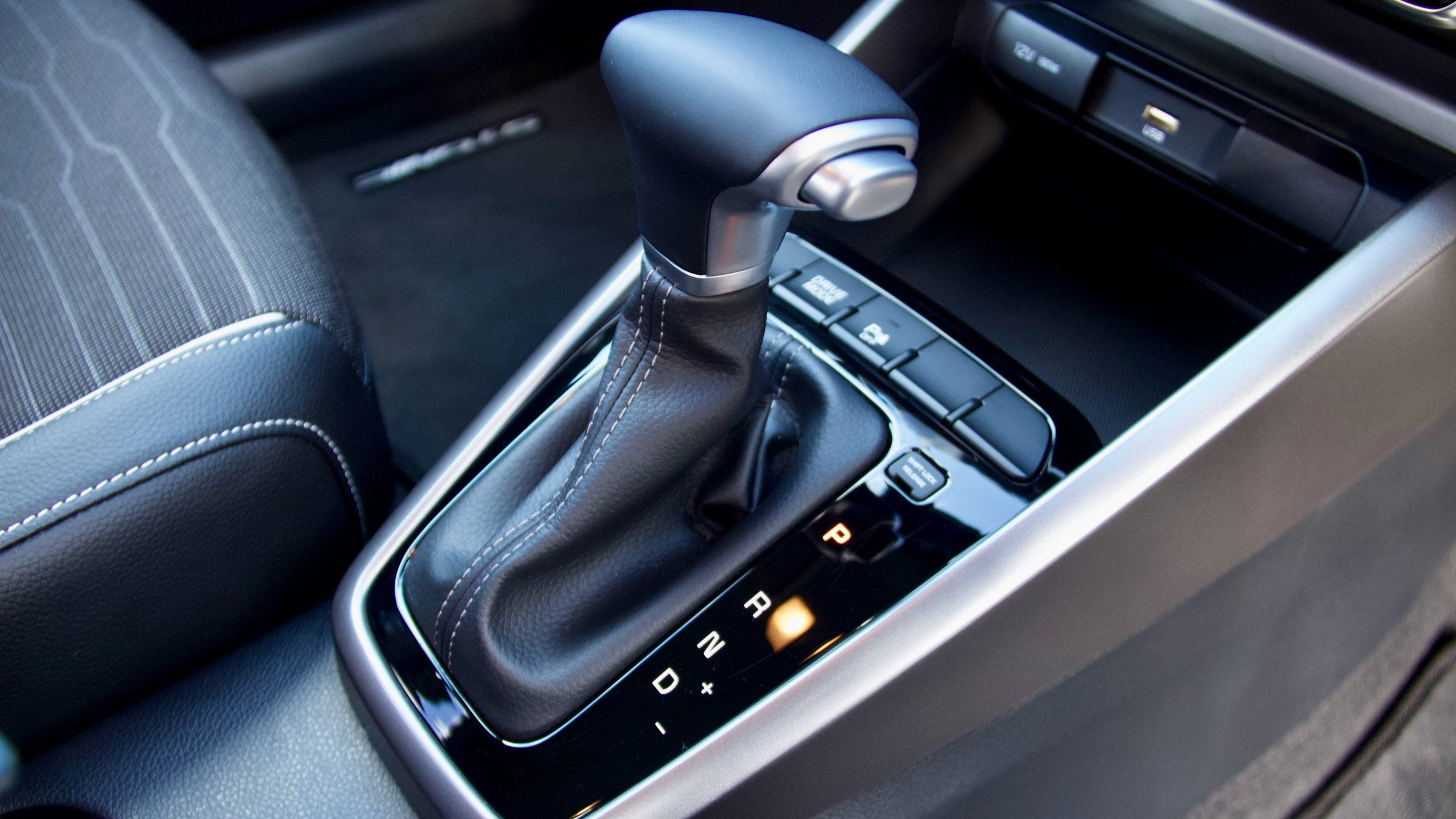
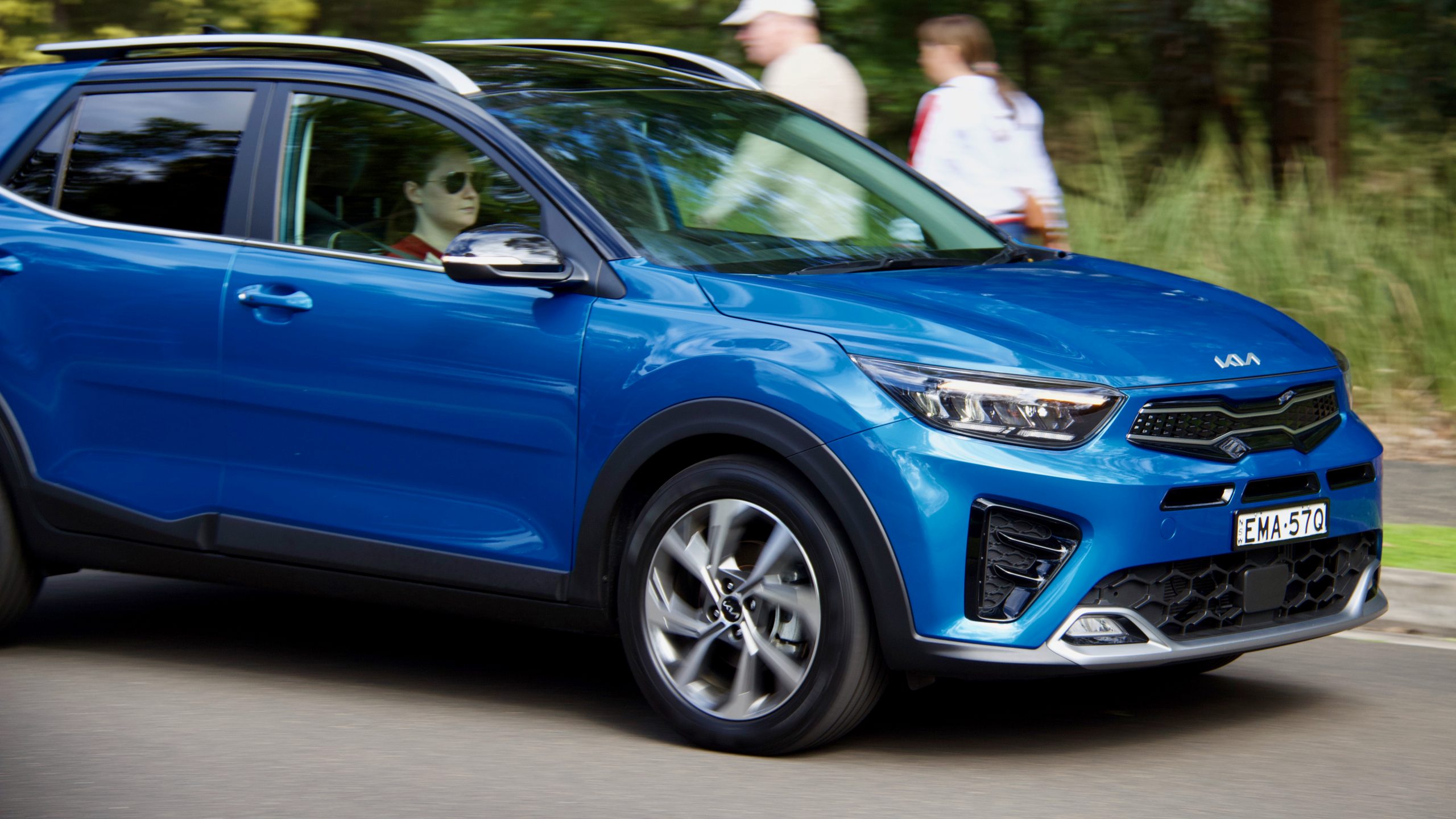
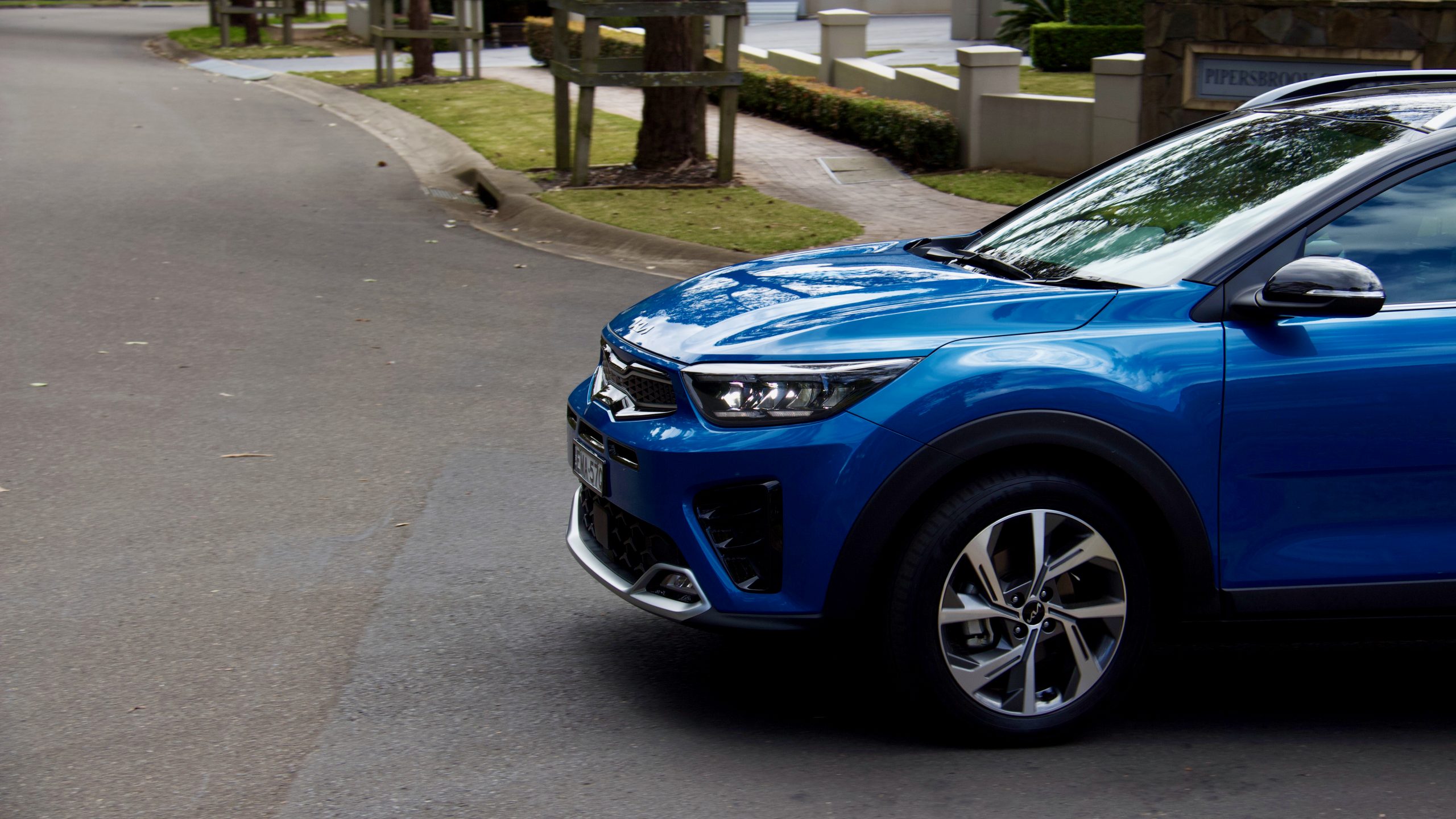
Kia’s local suspension tuning on the Stonic has paid dividends, and it rides very well at lower speeds – it’s definitely on the firm side, but still very comfortable. Most road imperfections are soaked up well. At higher speeds, the quality does degrade a bit, but is still more than acceptable. The ride is above class average and quite impressive.
Noise suppression at most speeds is good, but there is the predictable tyre and road roar at highway speeds, but again, nothing out of the ordinary. We think most buyers won’t be left wanting a sportier drive, and will appreciate the comfortable, safe and surefooted nature of Stonic
Interior & Practicality: 7/10
The interior of the Stonic is a bit of a reminder of Kia yesteryear, and there is a reason for that. While Australia has only had the Stonic since last year, it was first released overseas in 2017. While Kia has facelifted the Stonic, the interior is starting to feel a bit old. Visually, it’s a pretty inoffensive place – faux carbon fibre and metal inserts help to add interest and break the space up. The patterning on fabric and leatherette seats is a particular highlight.
Unfortunately, there are a lot of hard scratchy plastic surfaces throughout – some more soft touch materials as in some competitors would help the ambience. Luckily the leatherette steering wheel feels great in hand, and as does the similarity upholstered centre armrest. Another positive is that the materials all feel solid and the interior felt like it was screwed together well. Switchgear throughout the cabin is of reasonable quality, not quite as premium as newer Kia products, but nothing feels particularly cheap. The controls throughout the Stonic are well laid out, and simple to use.
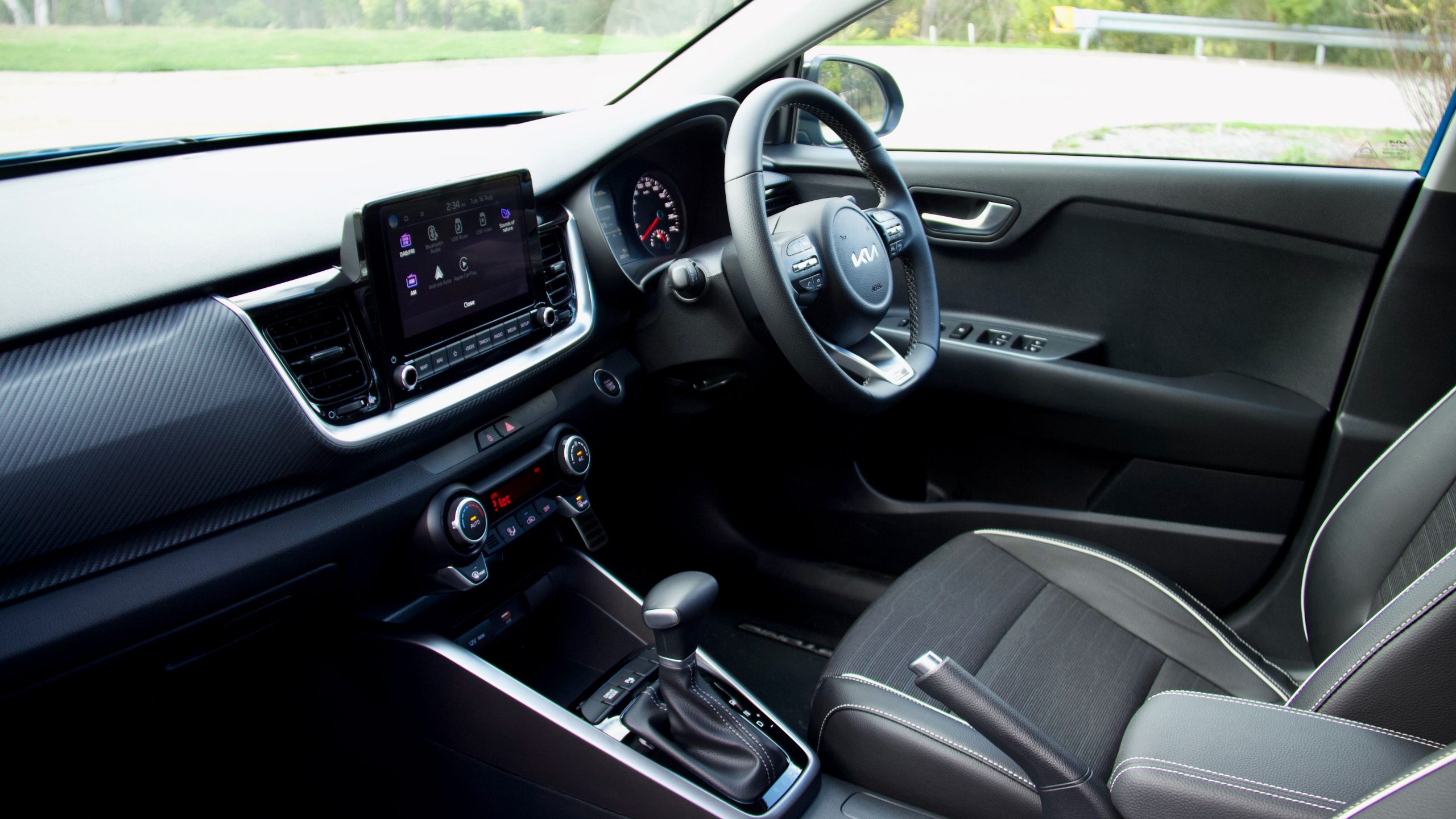
The Stonic features a reasonable amount of storage throughout the cabin with a phone sized caddy under ahead of the transmission shifter, good sized door pockets, a fairly small centre console box and reasonably sized cupholders in the centre console.
The front seats are a comfortable place to sit – they are well shaped and feature generous bolstering. While the driver’s seat is limited to six ways of adjustment, it is fairly easy to find a comfortable seating position, taller front seat passengers are a bit less lucky, without the ability to adjust their height. Visibility for the driver is reasonably good, though slightly limited by the rear pillars.
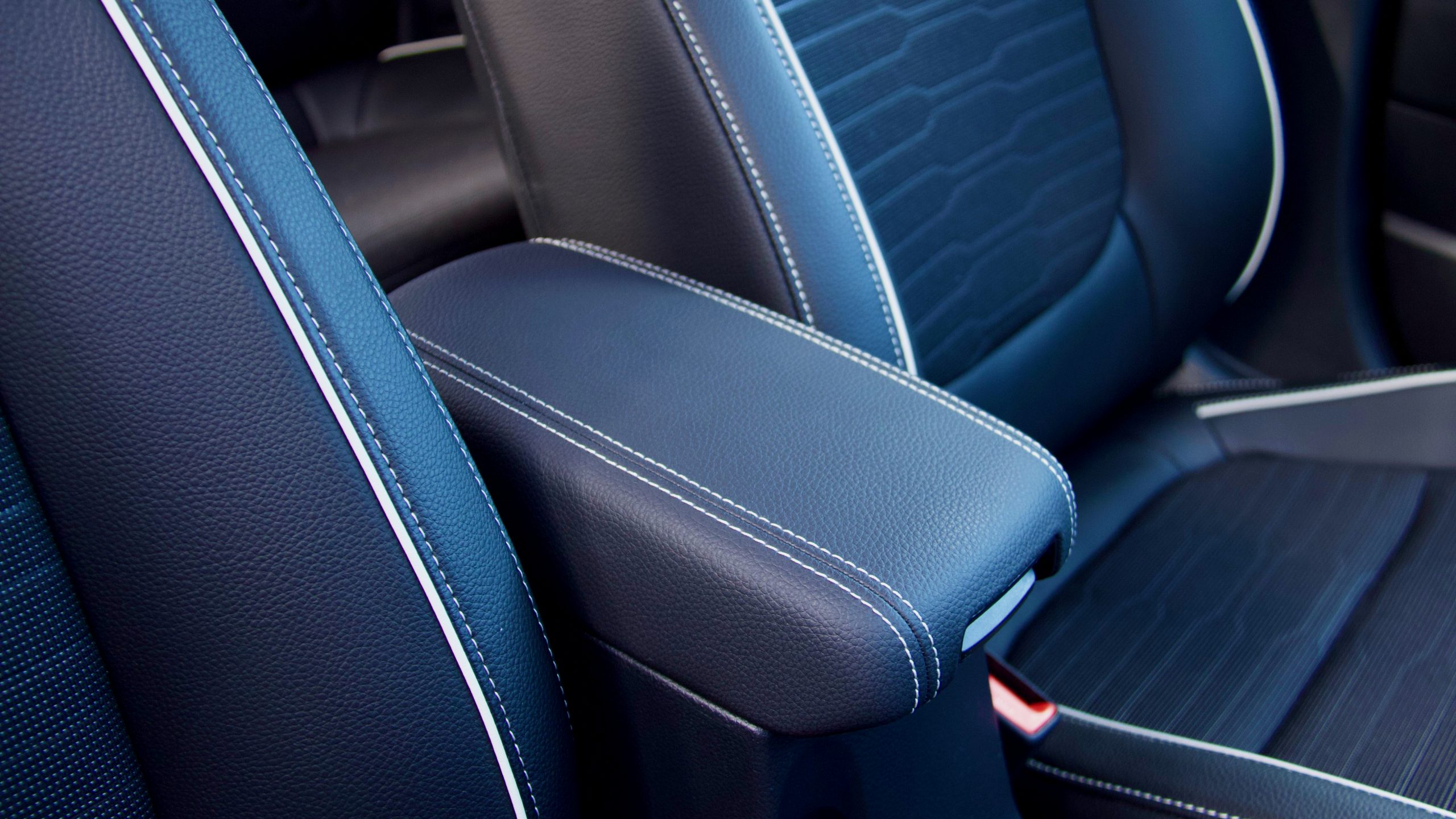
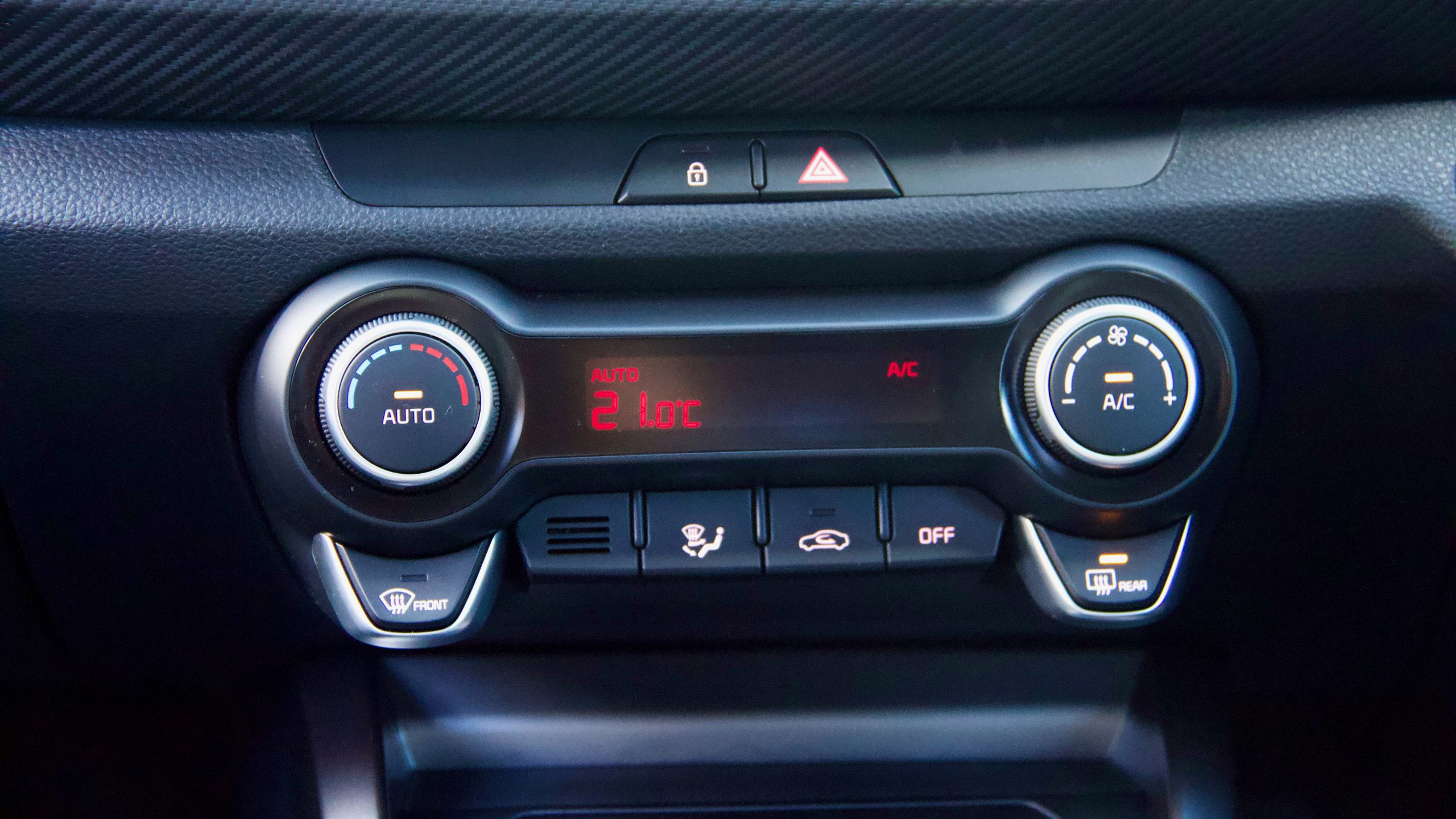
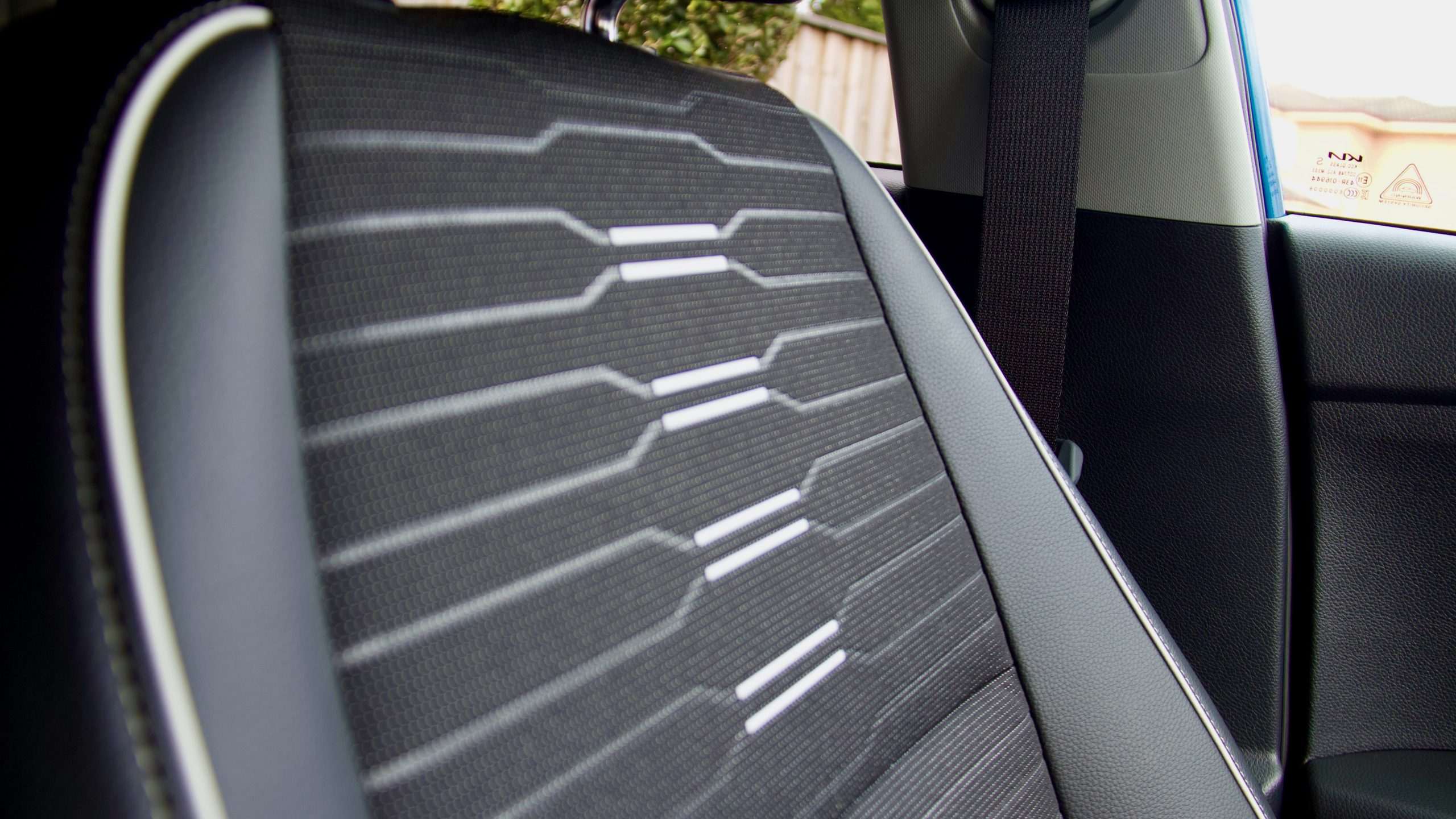
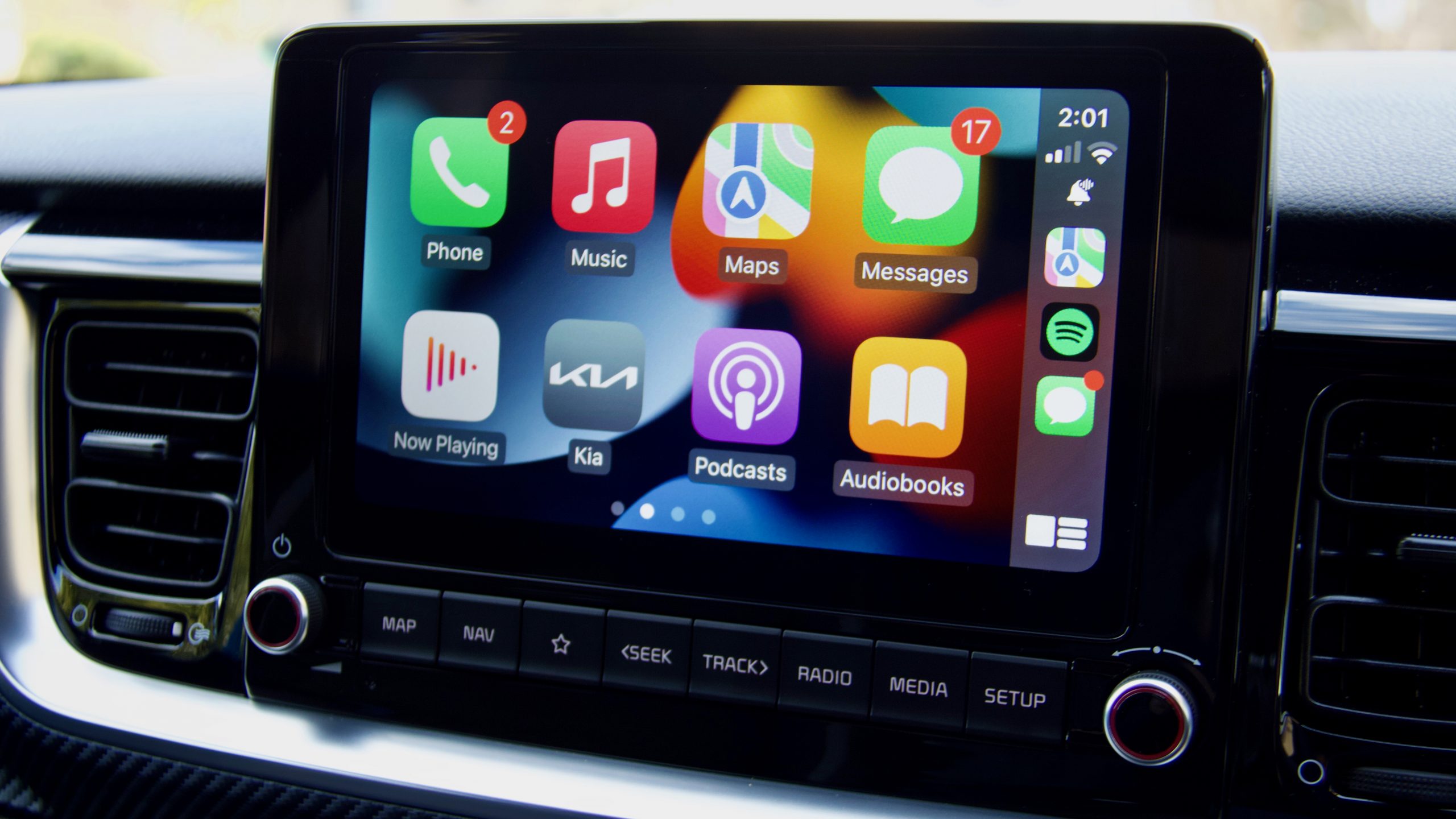
Ahead of the driver sits a simple instrument cluster – two analog dials for the tachometer and speedometer with a 4.2-inch display in the centre. The setup may be old school, but it does the job. The small display does show useful information, but if you want to see multiple pieces of data at once – say the digital speedometer and fuel usage – you’re out of luck. A larger display or fully digital display would be a big improvement.
One of Kia’s successes in modernising the Stonic is the infotainment system. The 8.0-inch touchscreen is another example of Kia’s ability to create great quality displays – with a high resolution and refresh rate which makes for fluid and satisfying interactions with the screen. Along with wired Apple CarPlay and Android Auto, the system features digital radio and satellite navigation, along with the obligatory AM/FM radio.
We particularly like Kia’s ‘shortcut’ buttons along the bottom of the screen. The programable ‘star’ button, seen in other Kia systems, is great for allowing drivers a quick way to get back to what they deem most important within the infotainment system. Audio is delivered to occupants through a six speaker system, which is acceptable, but not outstanding, with average clarity and bass.
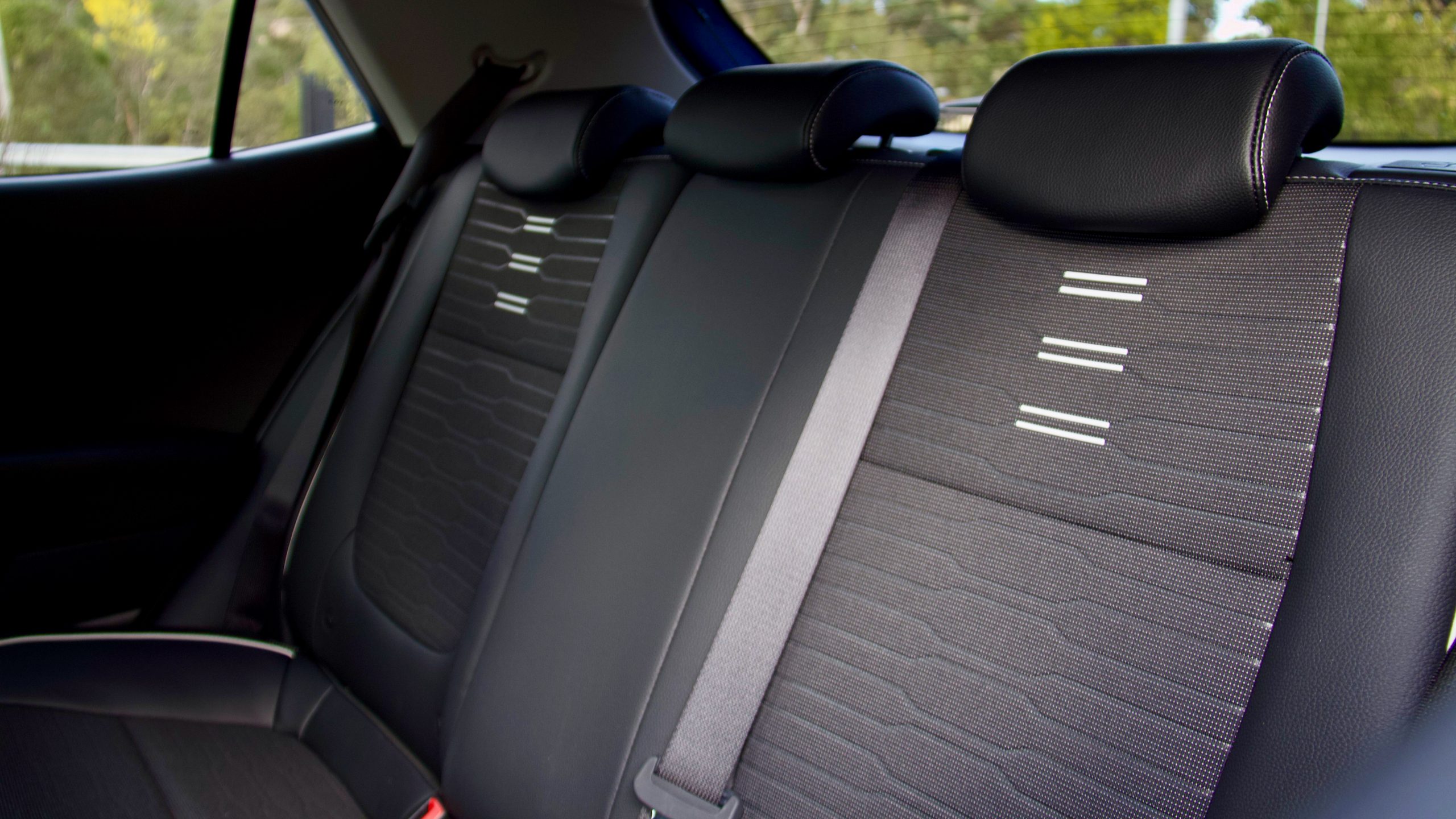
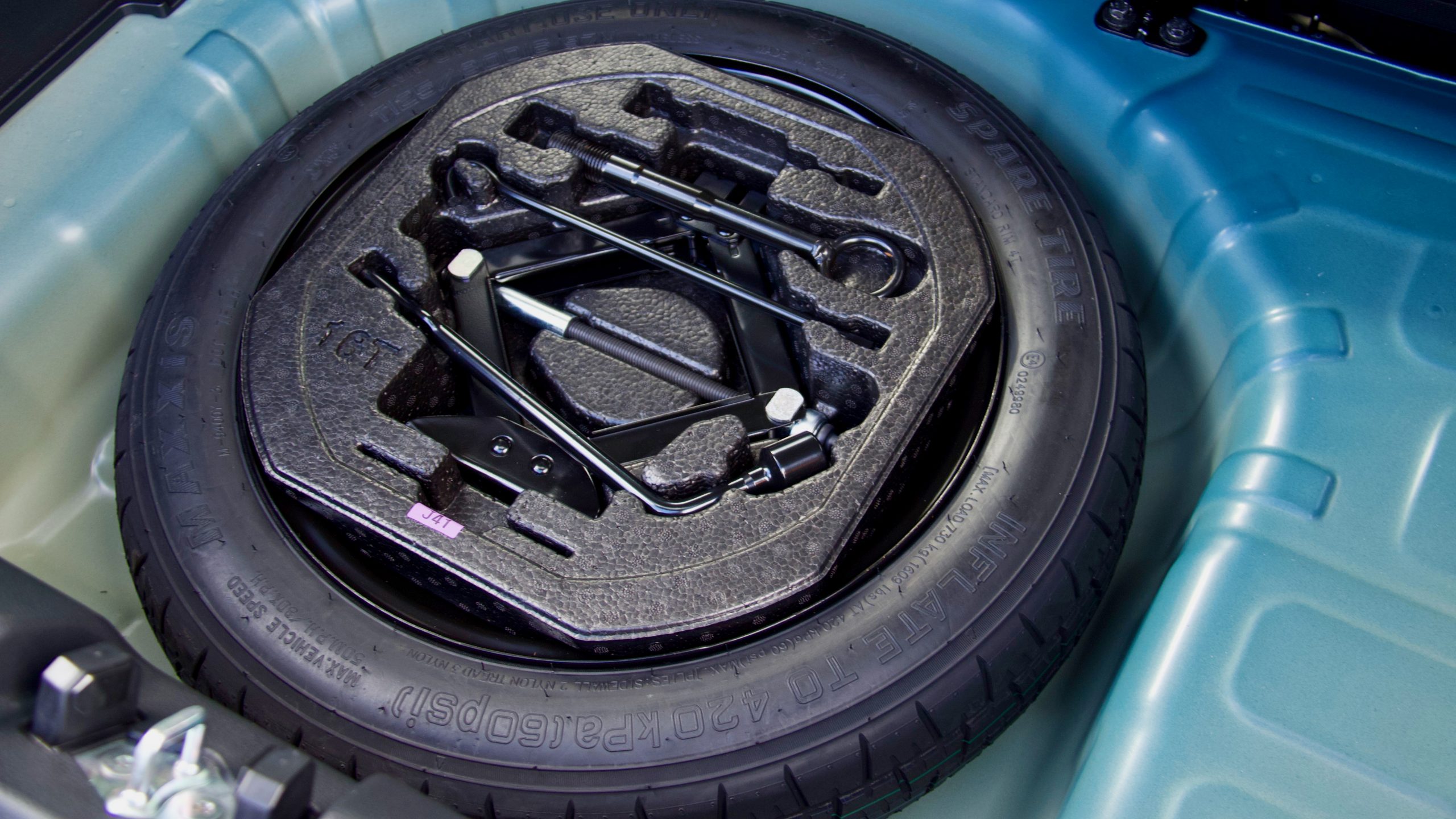
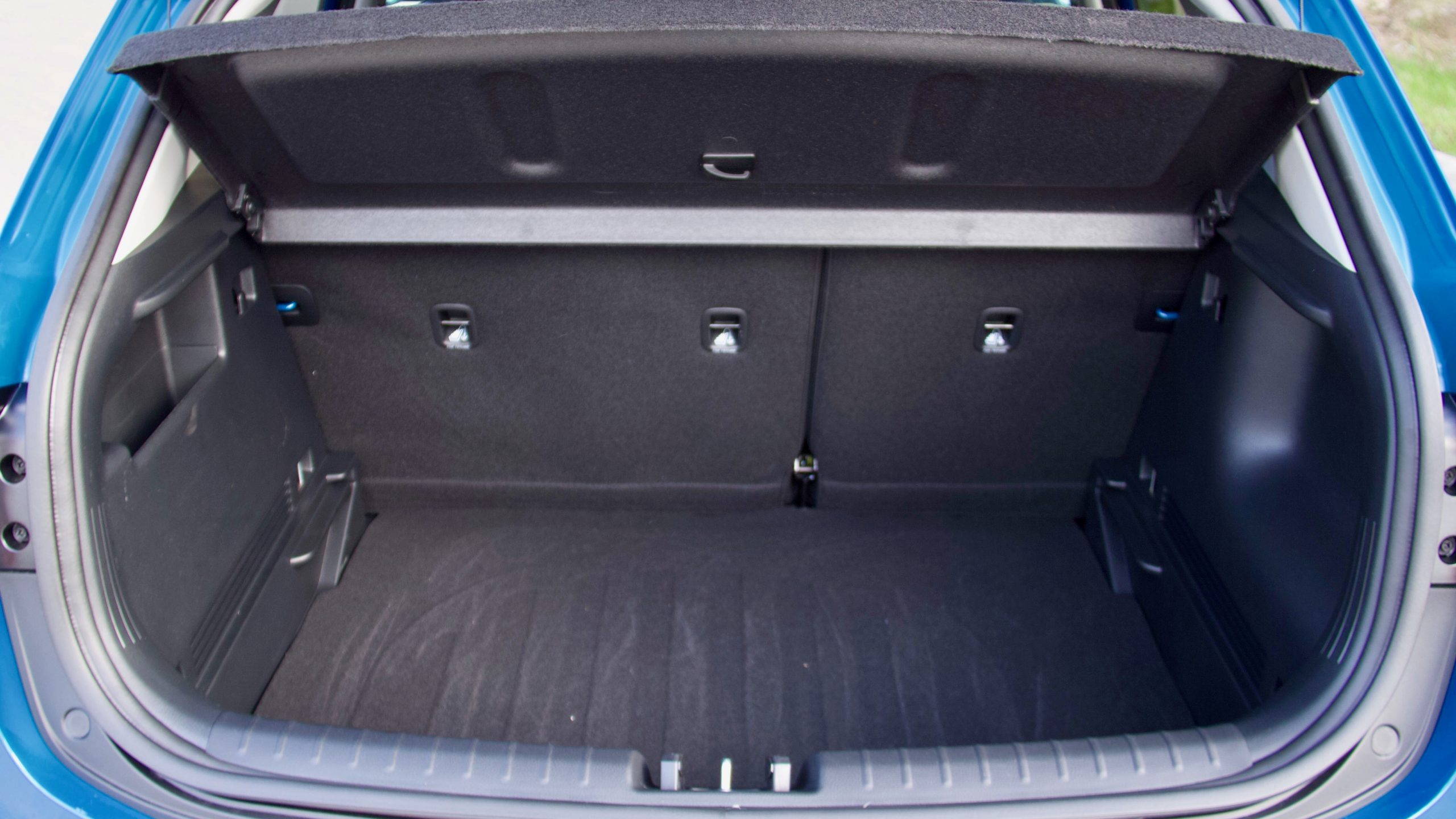
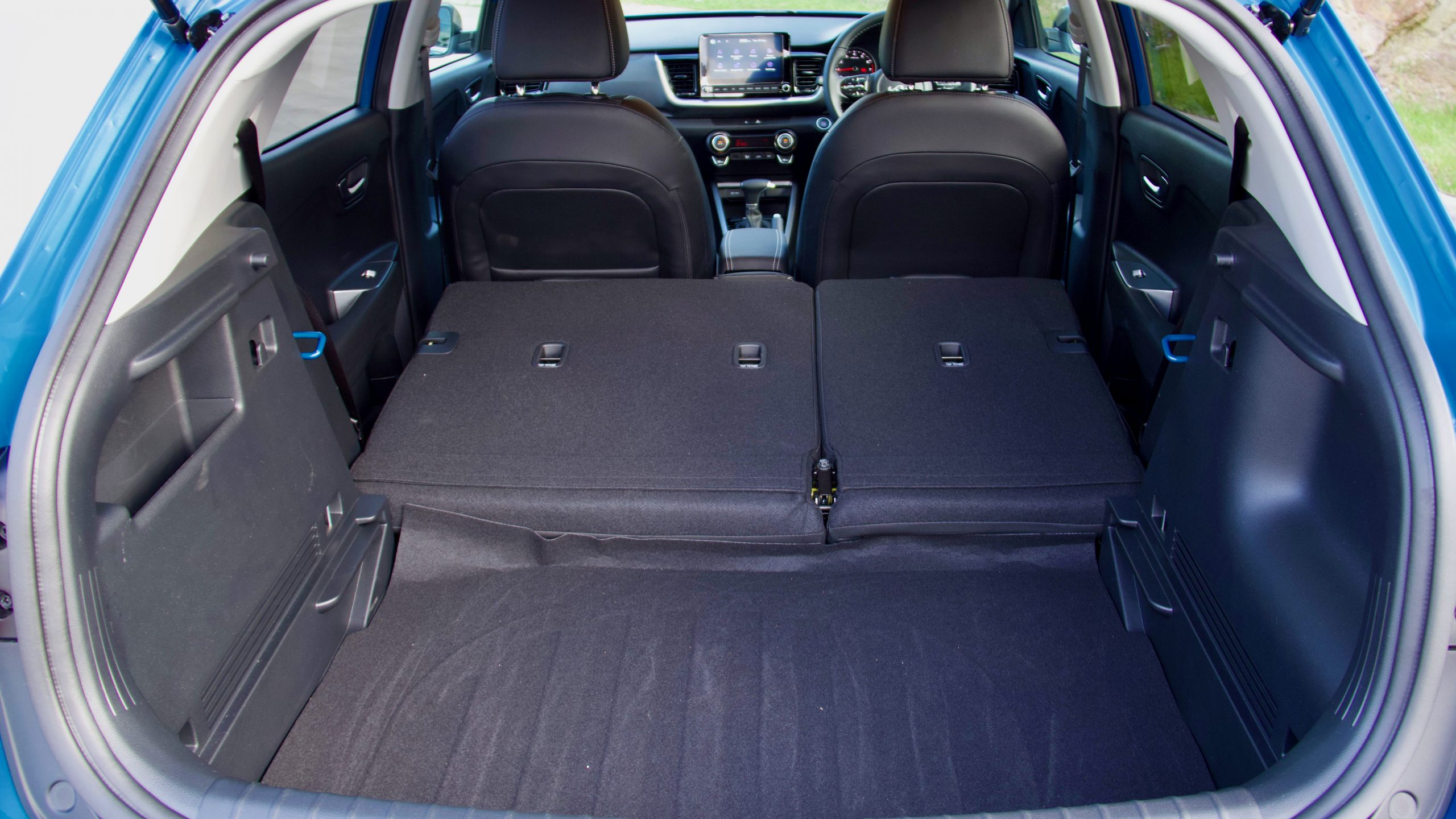
The second row of the Stonic is a fairly spacious space for the class. The flat rear floor helps with rear legroom and headroom is also good. Two adults can travel in comfort in the rear row, but three is a push – for short trips only, due to the small centre seat. Three children would fit with ease. Rear seat amenities are sparse – there is a USB-A charging port, but no air vents or centre armrest.
Opening the tailgate of the Stonic reveals a 332-litre space with all the seats up. This is a reasonable space, sitting between the 264 litres of the CX-3 and 390 litres of the Yaris Cross. The space expands to 1,132L with the 60:40-split rear row folded, though there’s a lip between the boot floor and seat base – a dual-level boot floor would help a lot here. A low boot lip makes loading items into the boot easy, and there are hooks to tie luggage down with. Sitting underneath the boot floor is a space saver spare – comforting in 2022 where spare tyres are rapidly disappearing.
Service & Warranty: 8/10
The 2022 Kia Stonic GT-Line has 12 months or 10,000kms (whichever comes first) service intervals. Capped price servicing covers the first seven years, or 70,000kms. For comparison, the CX-3 shares the same service intervals, where as the Yaris Cross has a longer 15,000km or 12 month interval. Across the first five years, the Stonic will cost $2143 to service, the CX-3 will cost $1839 and the Yaris Cross a low $1075. Servicing the Stonic is definitely on the pricier side, though buyers get a longer than average seven years of capped price coverage.
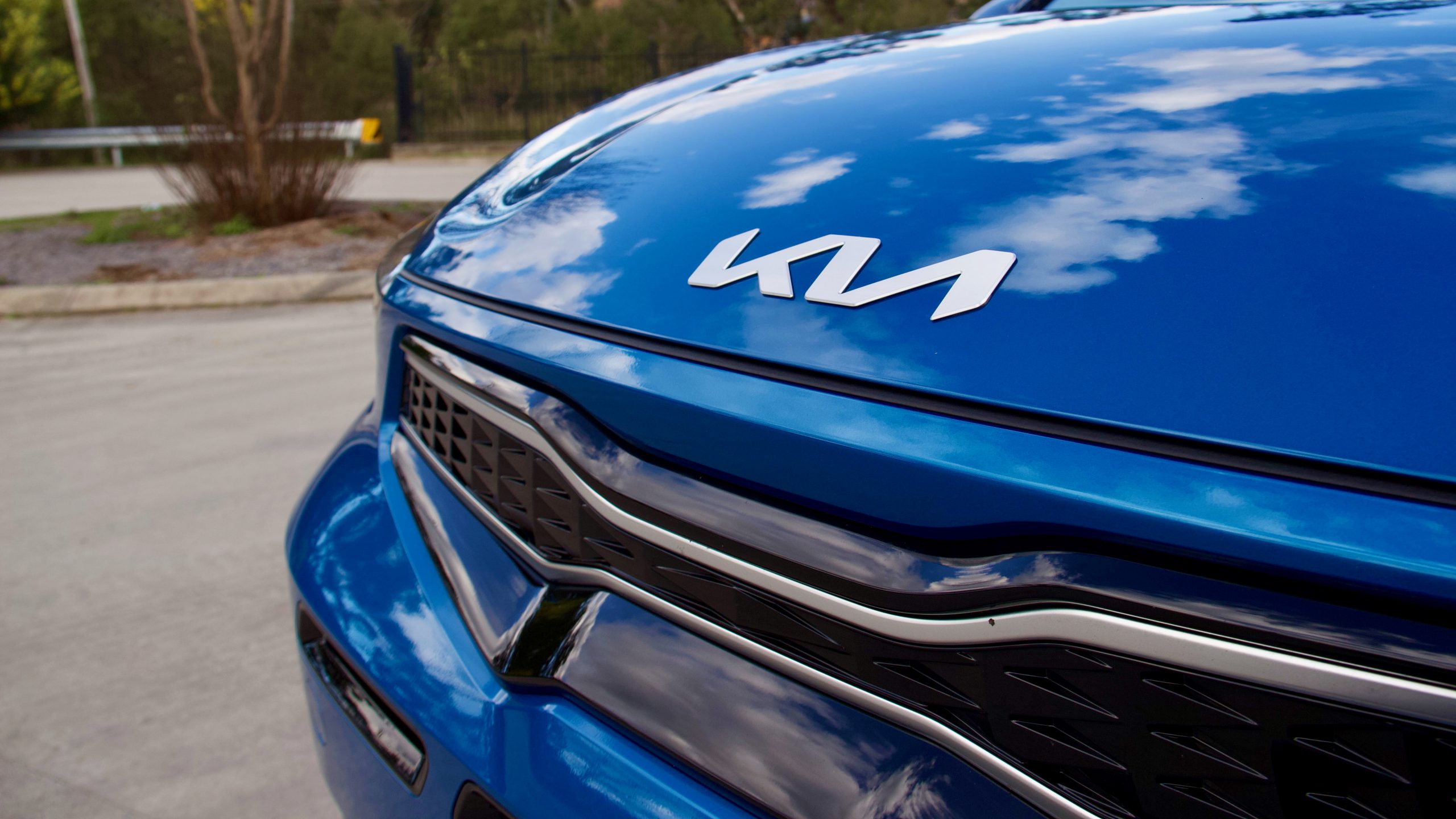
Warranty coverage for the Stonic GT-Line is seven years/unlimited kilometres, which is longer than the five years/unlimited kilometre warranty that Toyota and Mazda offer on the Yaris Cross and CX-3 respectively. Toyota does extend drivetrain warranty to seven years on the Yaris Cross if servicing is completed to logbook specifications, however.
The Stonic comes with twelve months of free roadside assistance, which can be extended up to eight years, one year for each service completed at a Kia dealer. The CX-3 receives five years of roadside assurance from Mazda, where as Toyota includes no free roadside assistance with the Yaris Cross.
The 2022 Kia Stonic GT-Line DiscoverAuto Rating: 7.4/10
The 2022 Kia Stonic GT-Line is a well priced small SUV that has plenty going for it. It has a great infotainment system and practical interior space. We think most buyers will find the handling and ride balance, which errs towards the side of comfort and safety rather than matching the sportiness that the GT-Line badging, perfectly tuned to their expectations. That’s not to say that the drivetrain can’t put a smile on your face, which adds an element of charm to the Stonic.
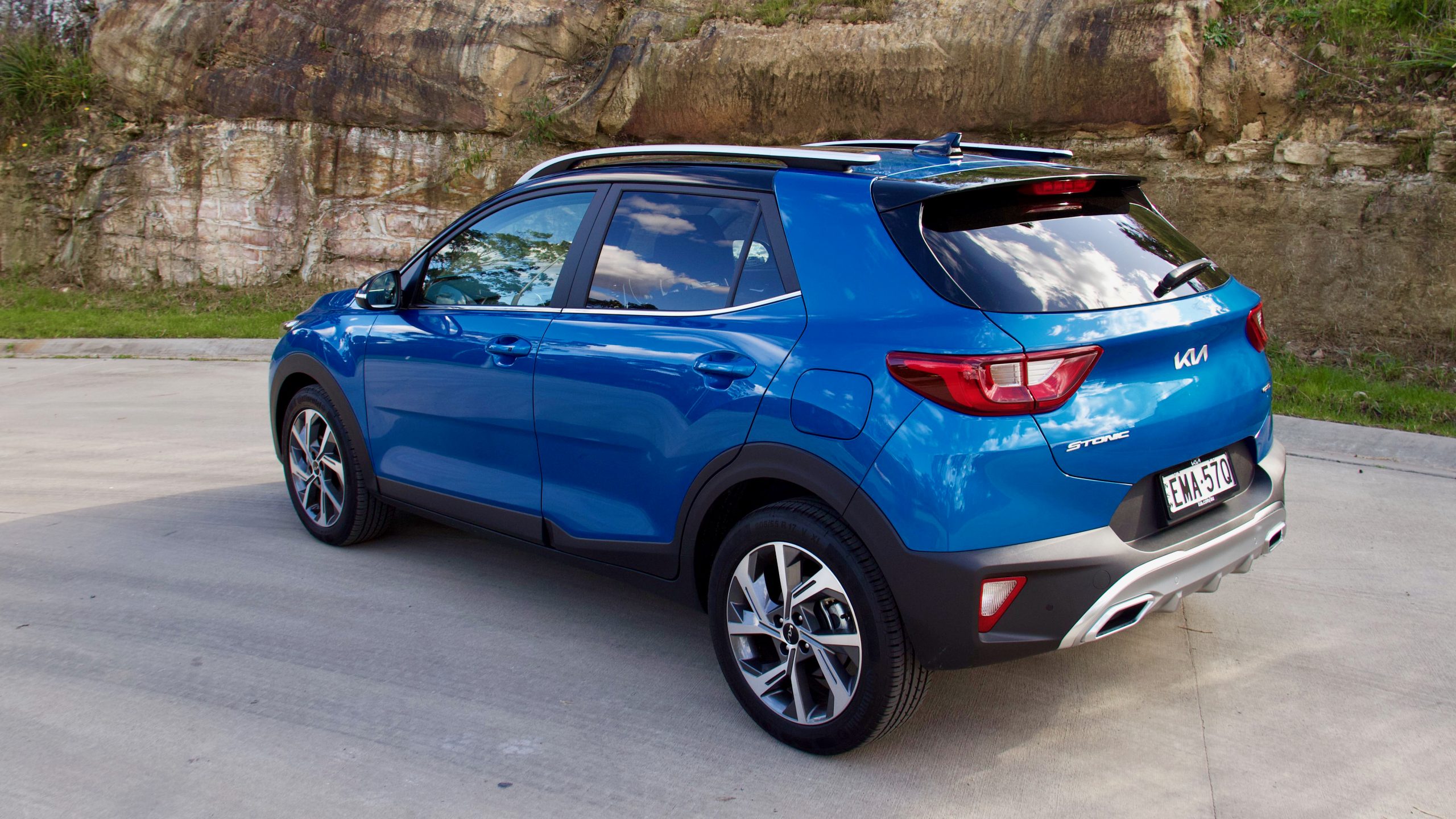
It is unfortunate that the Stonic does have some negative attributes – it’s difficult to escape that it has an an old interior design and there are a lot of missing safety features. The biggest downside of the drivetrain would be the transmission, which lacks refinement and is a liability to the otherwise character-filled engine. While the seven-year warranty is near industry leading, servicing the Stonic isn’t cheap. However, its rivals aren’t perfect either and if you are buying a small SUV, it would be a mistake not to consider the Stonic GT-Line because it offers a lot to buyers.
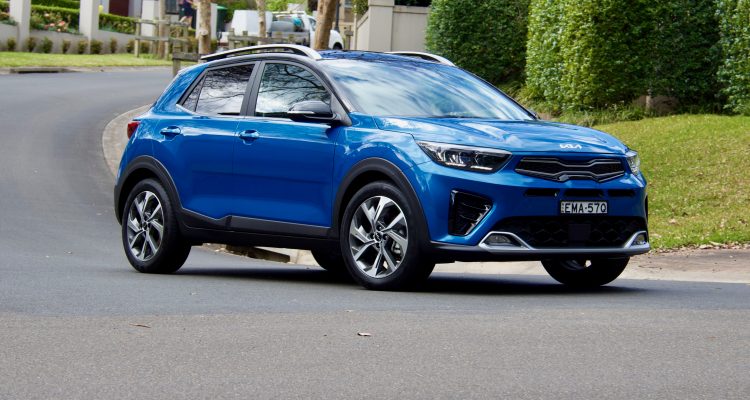
Leave a Reply